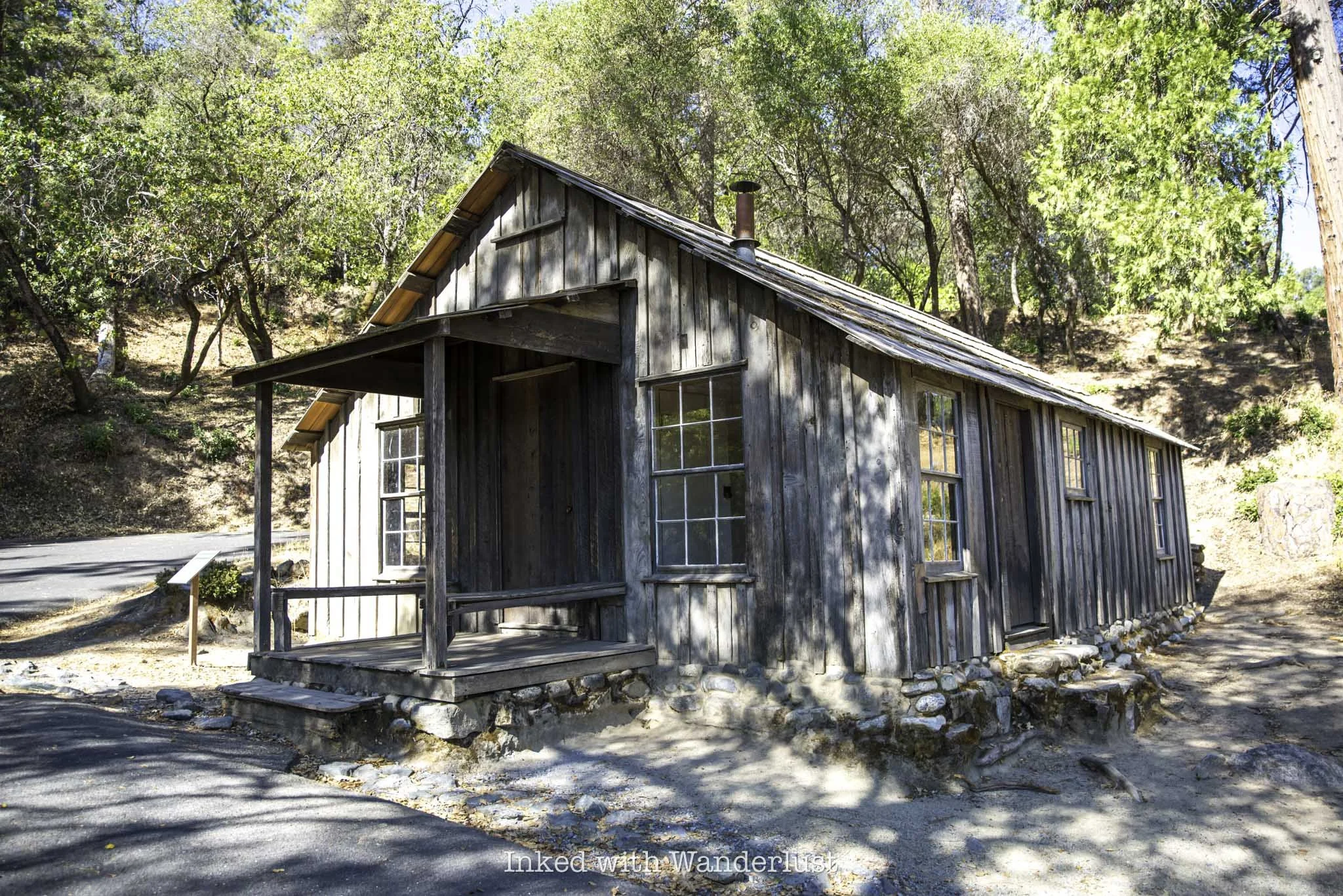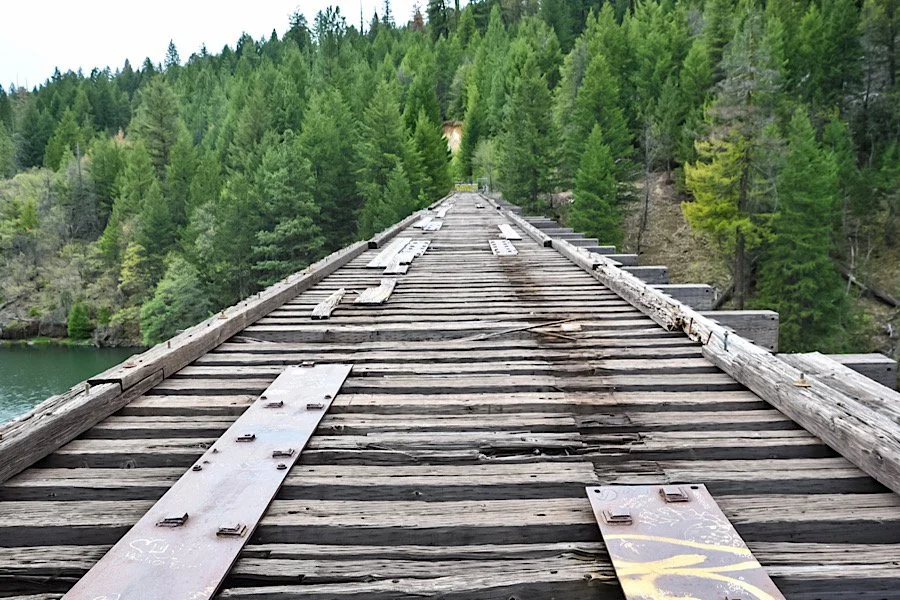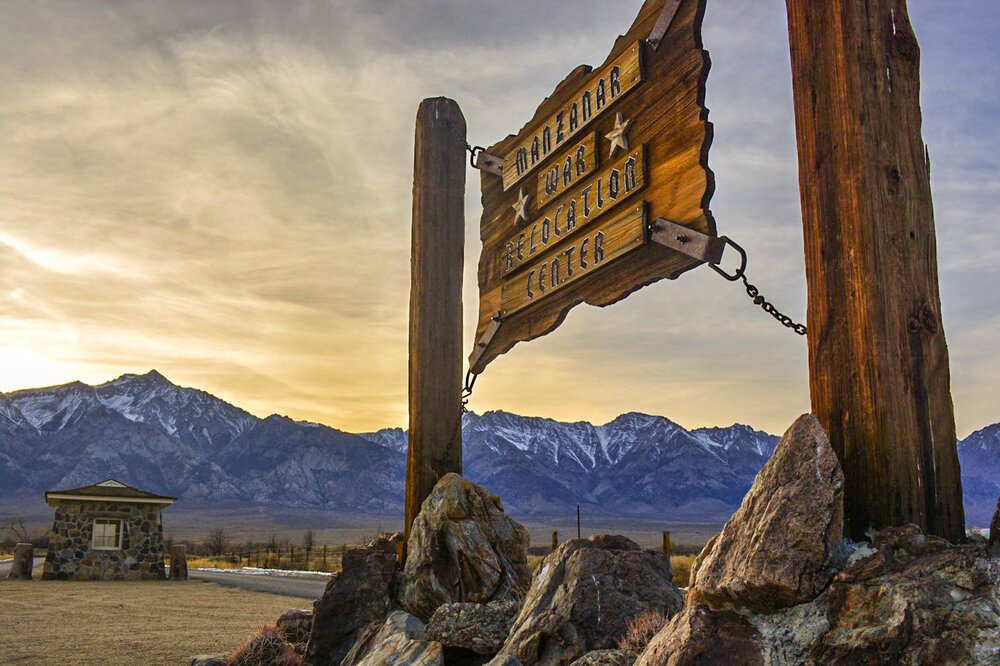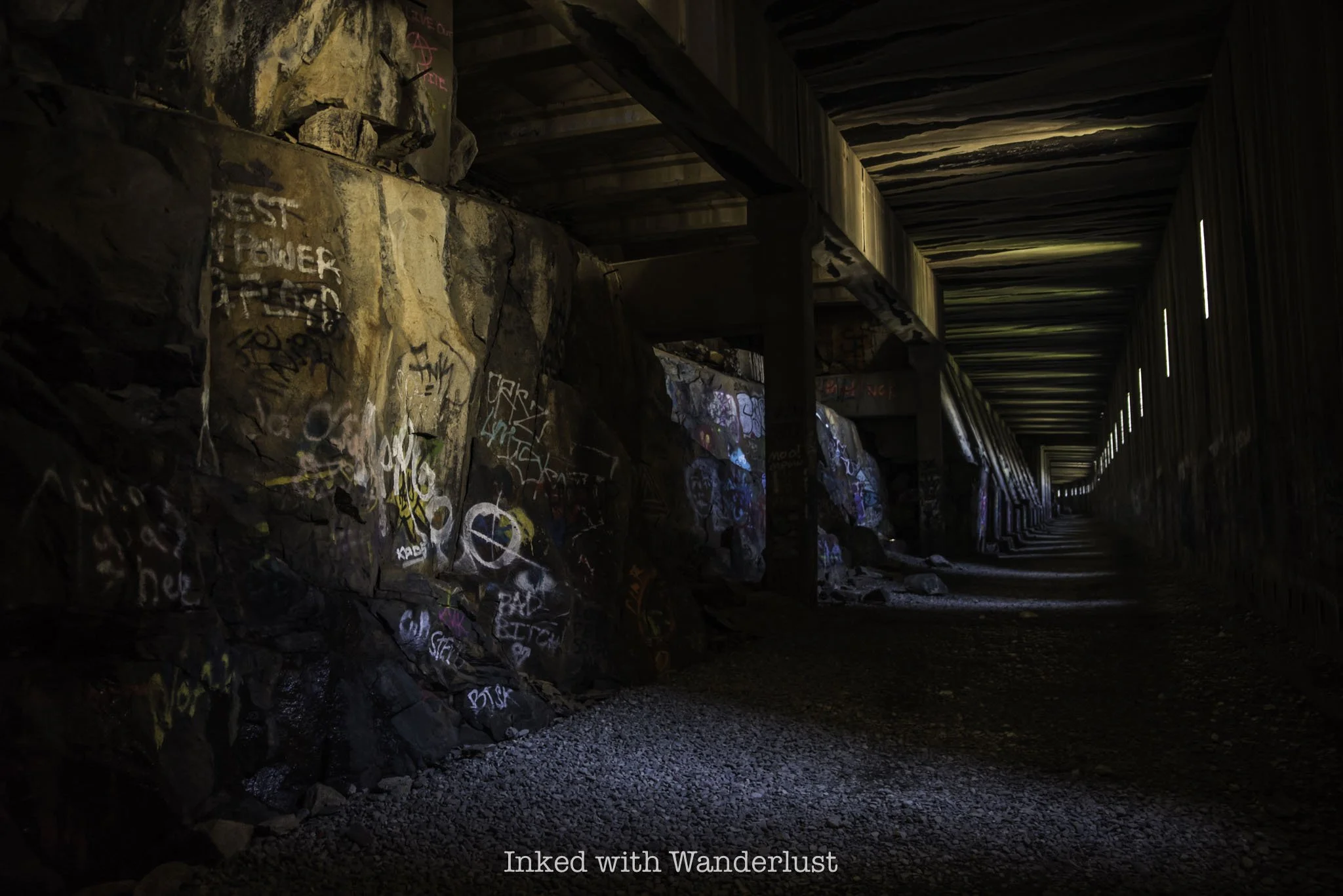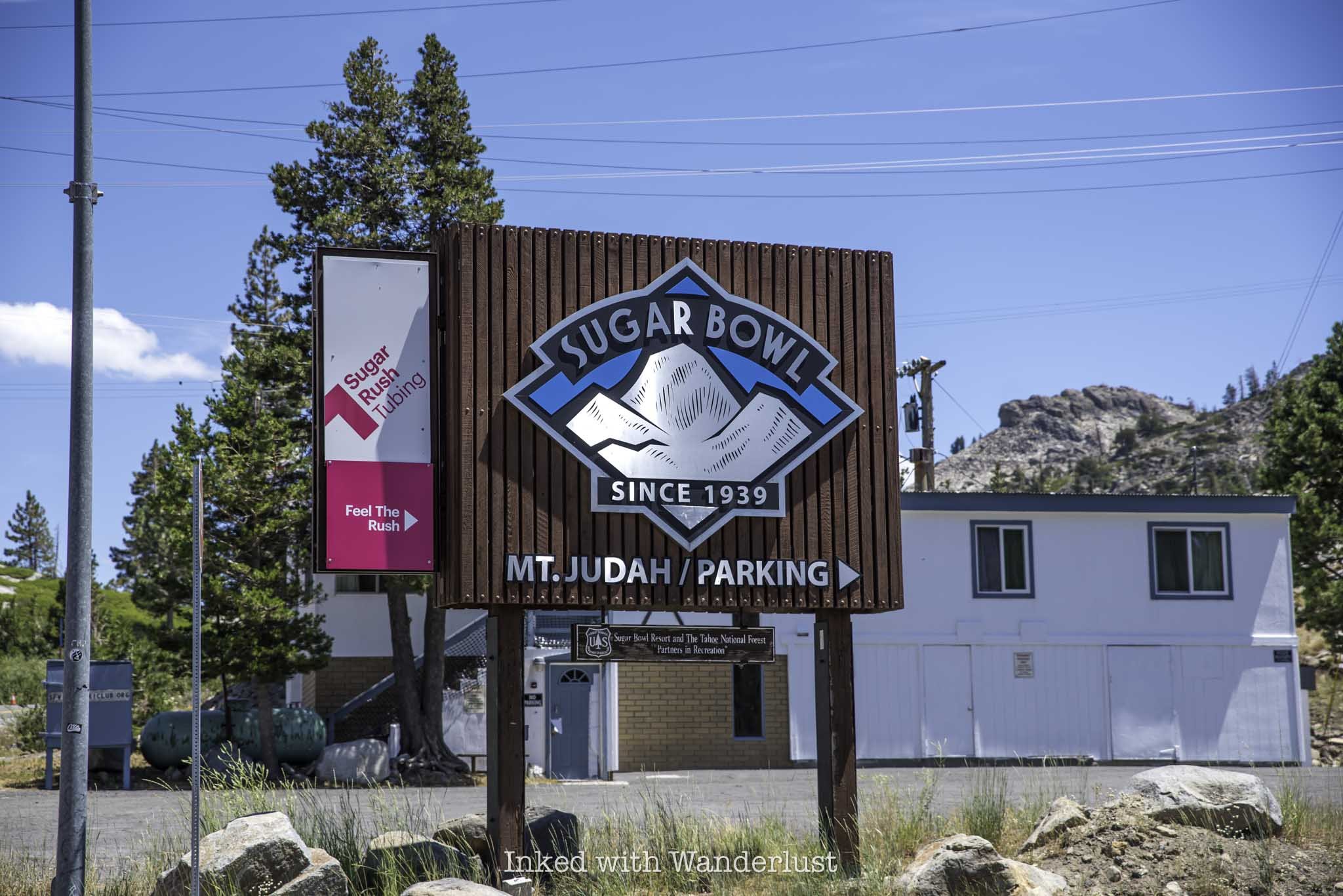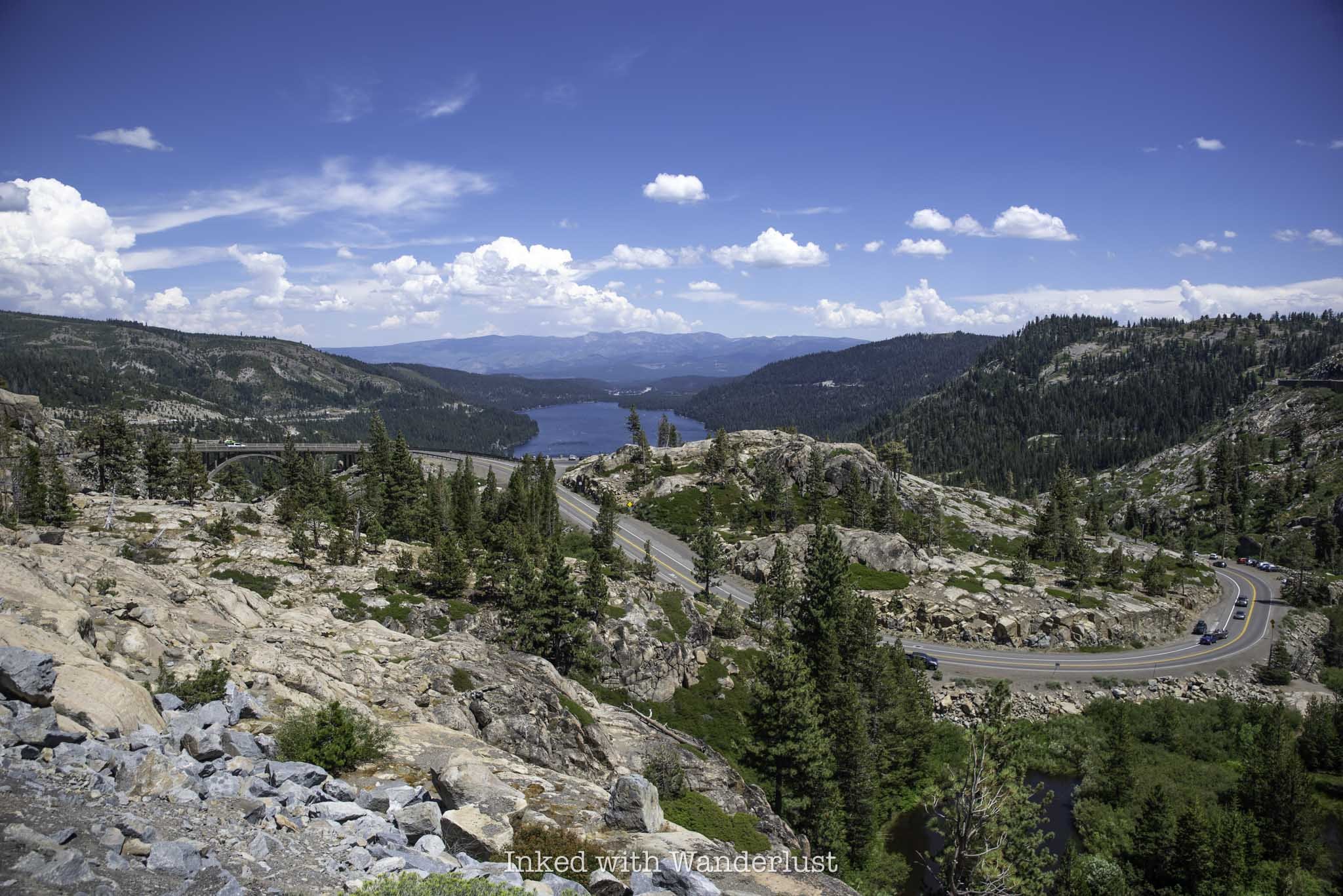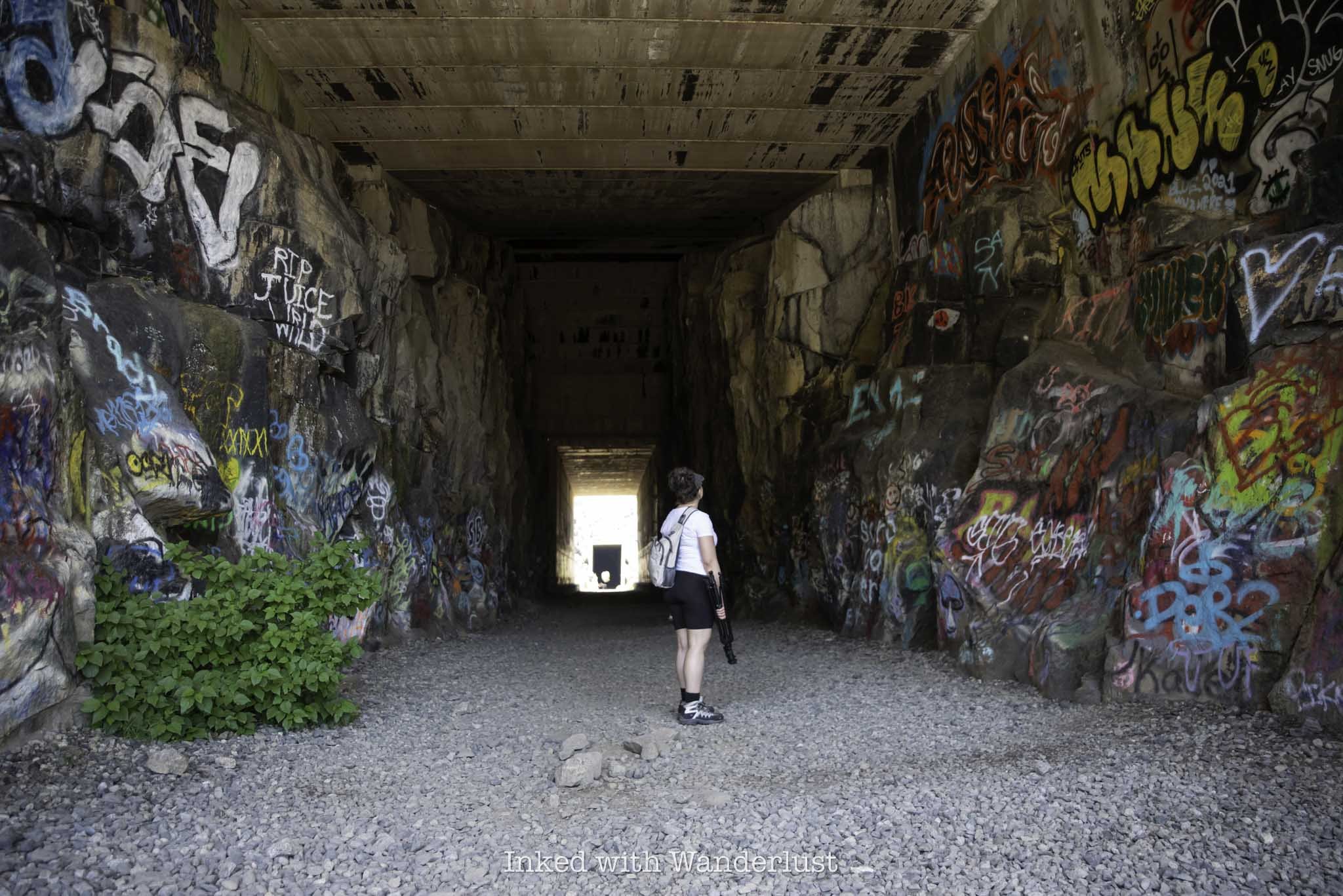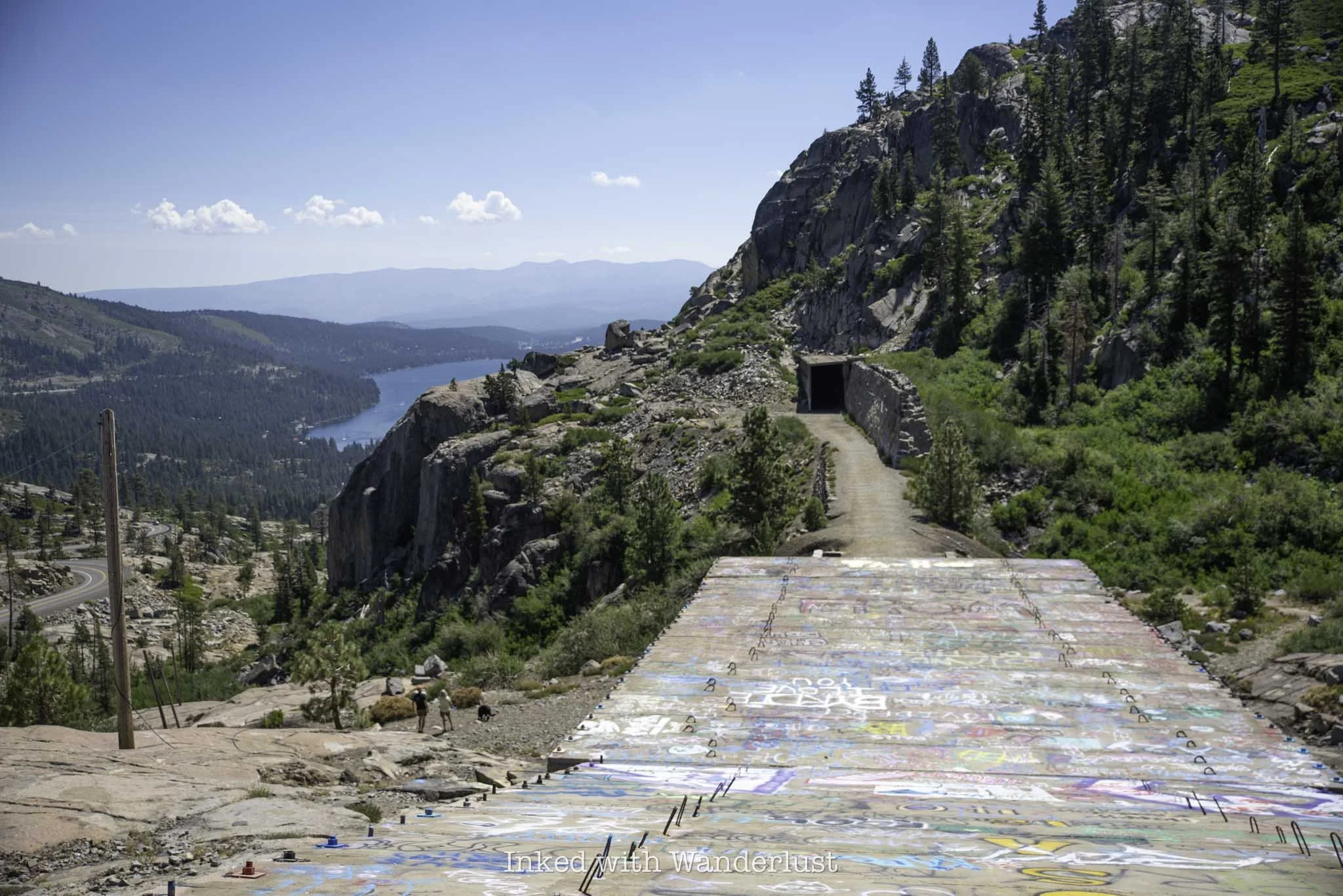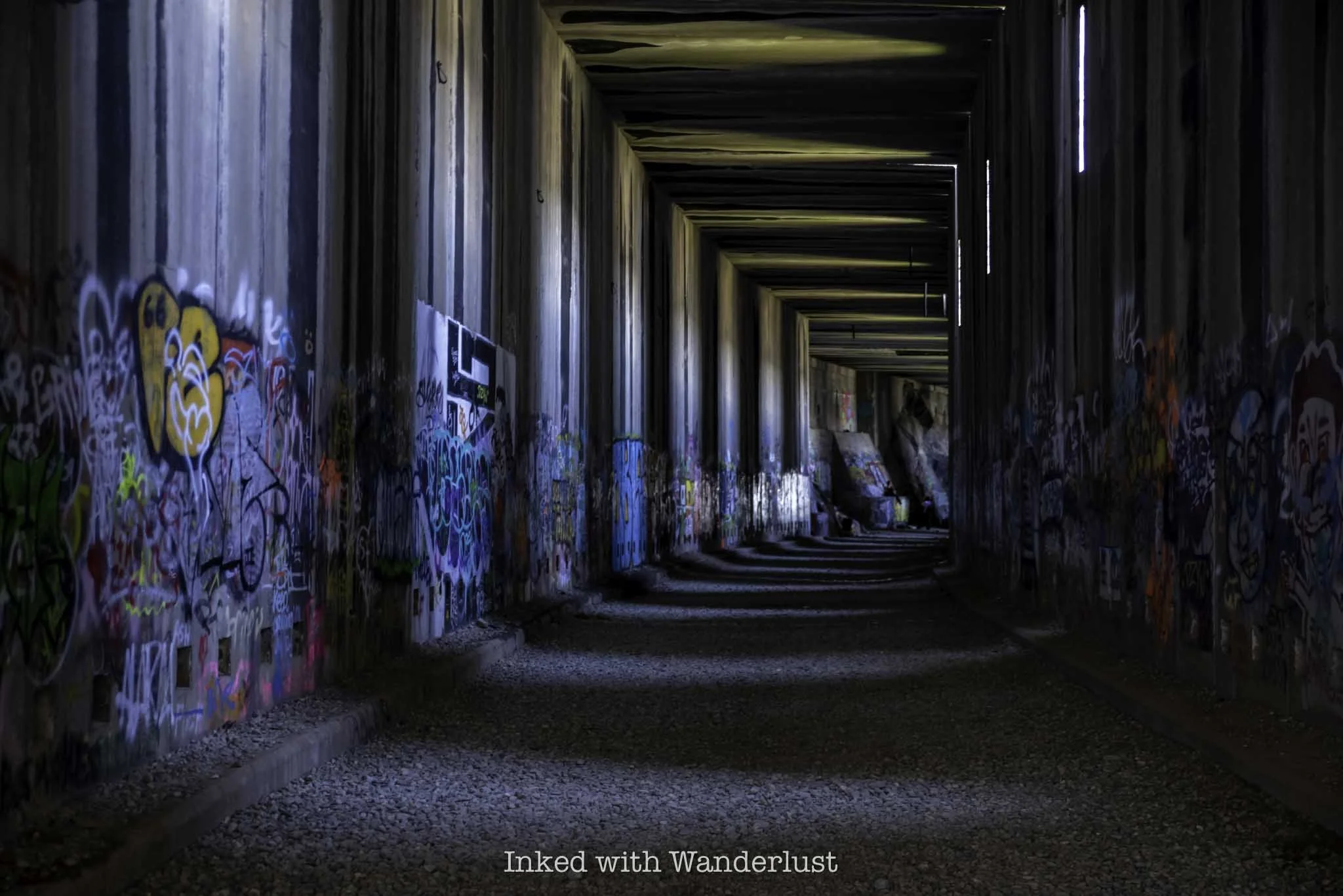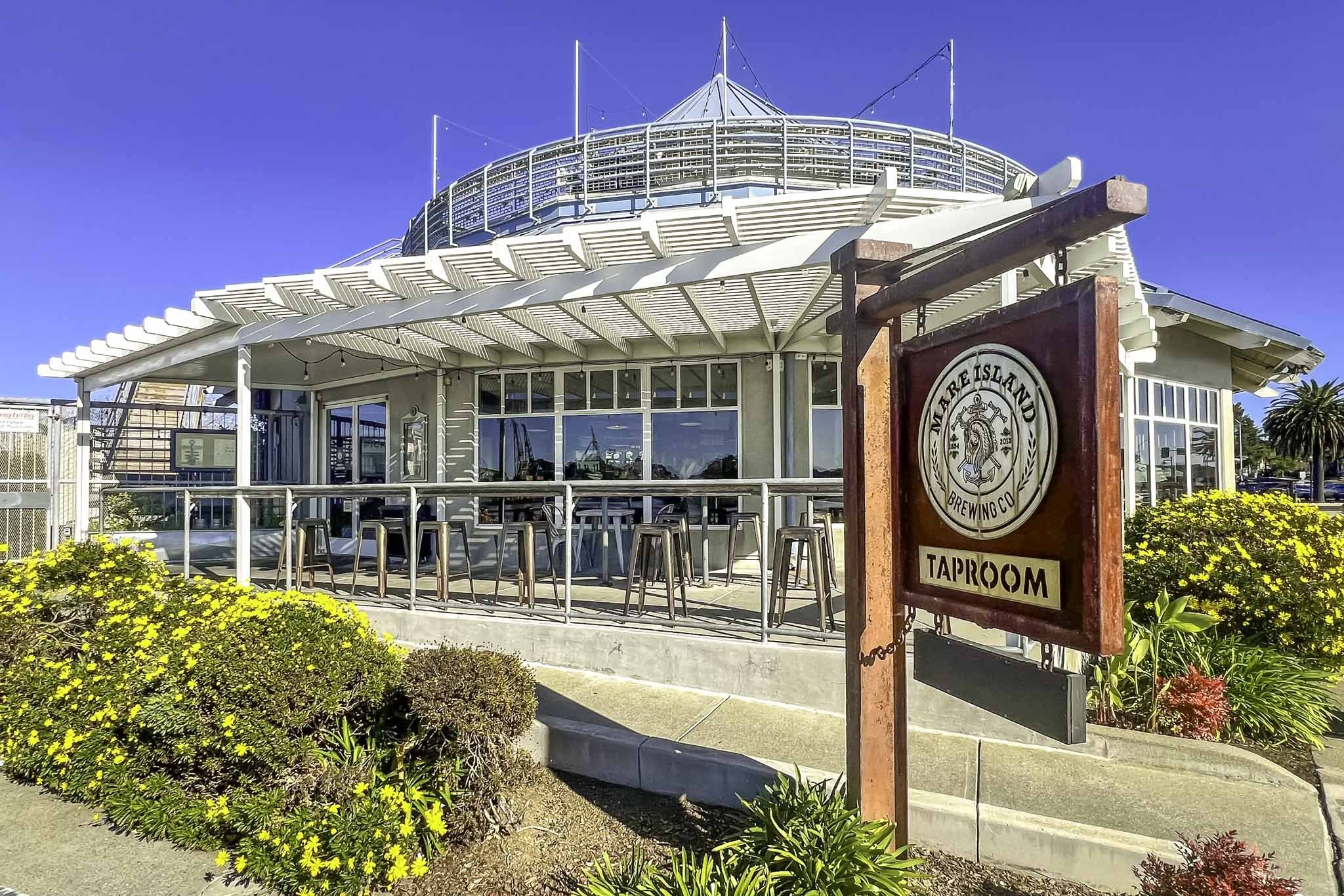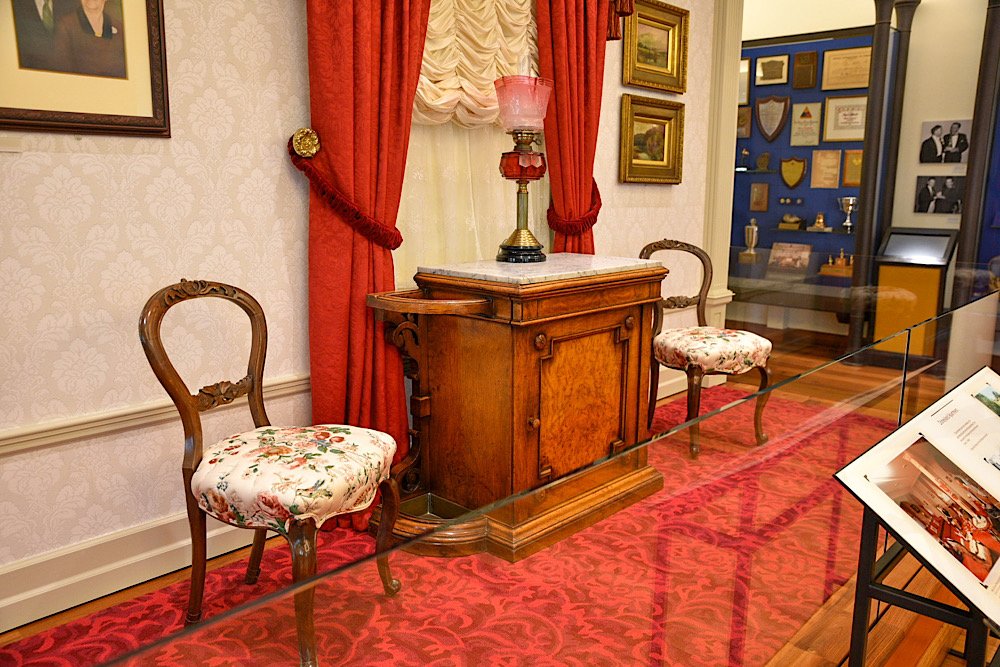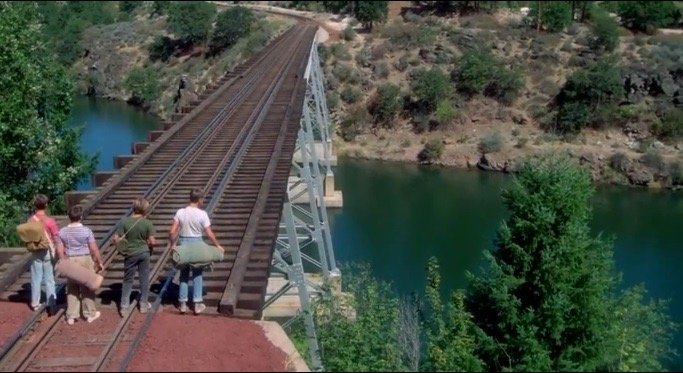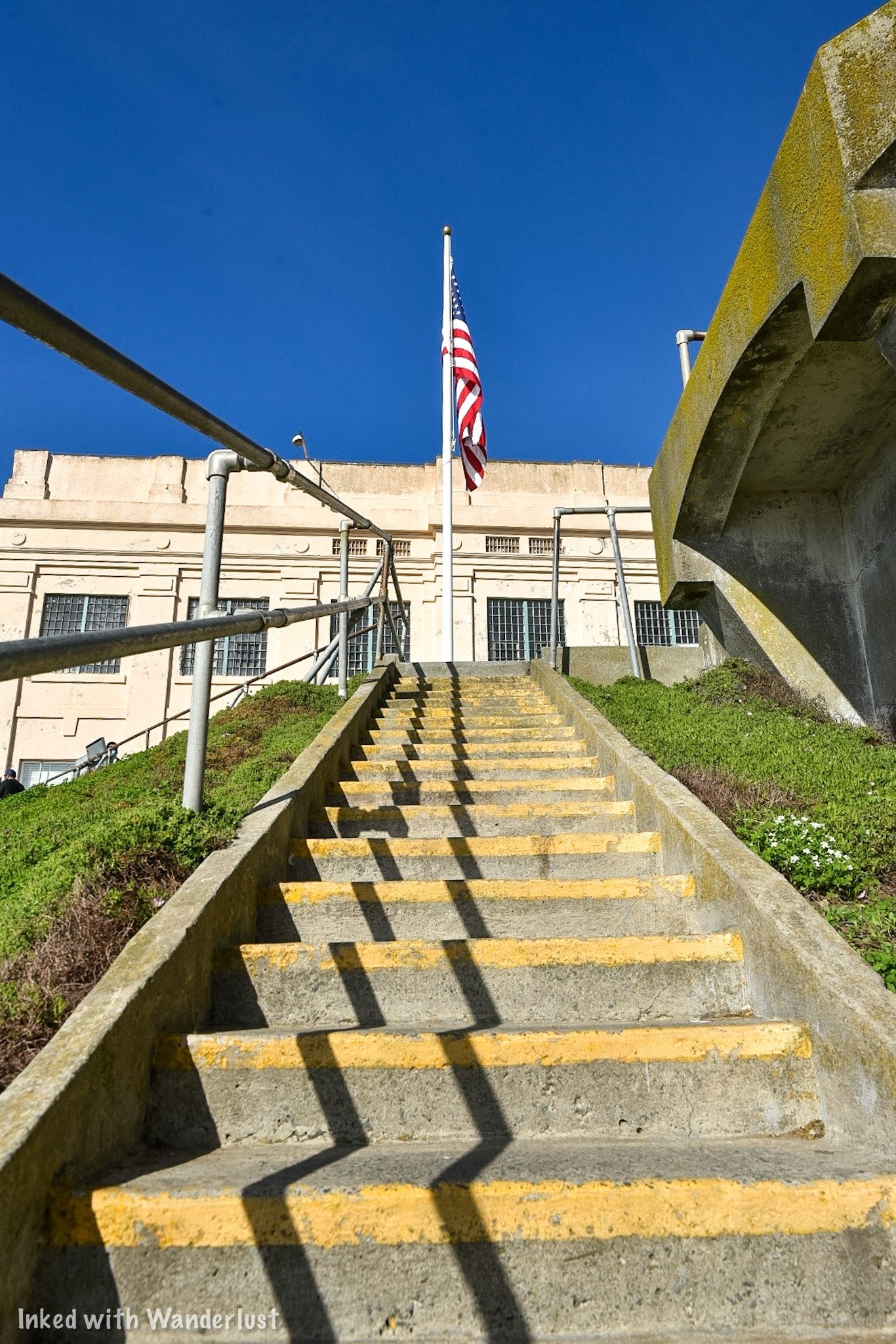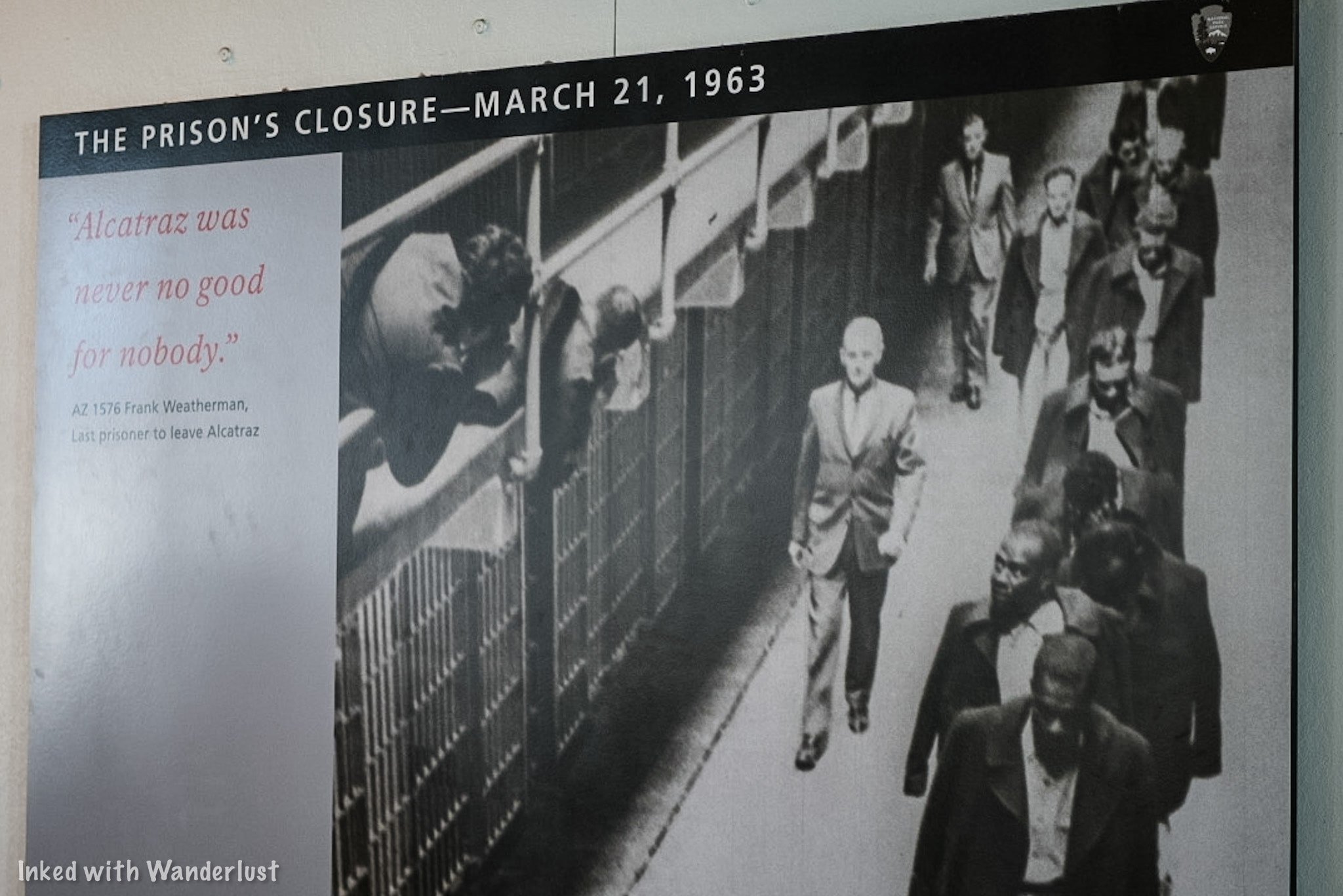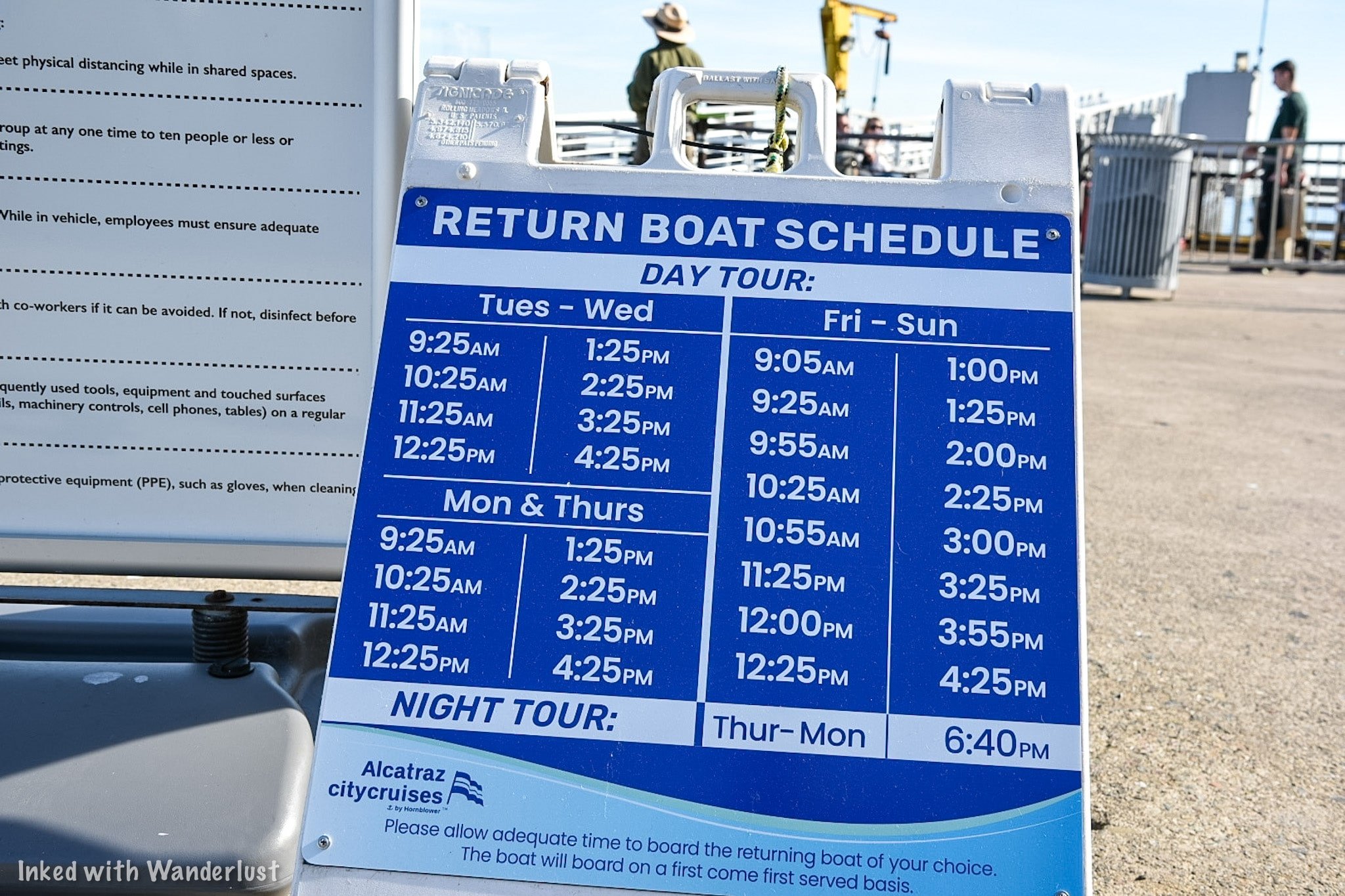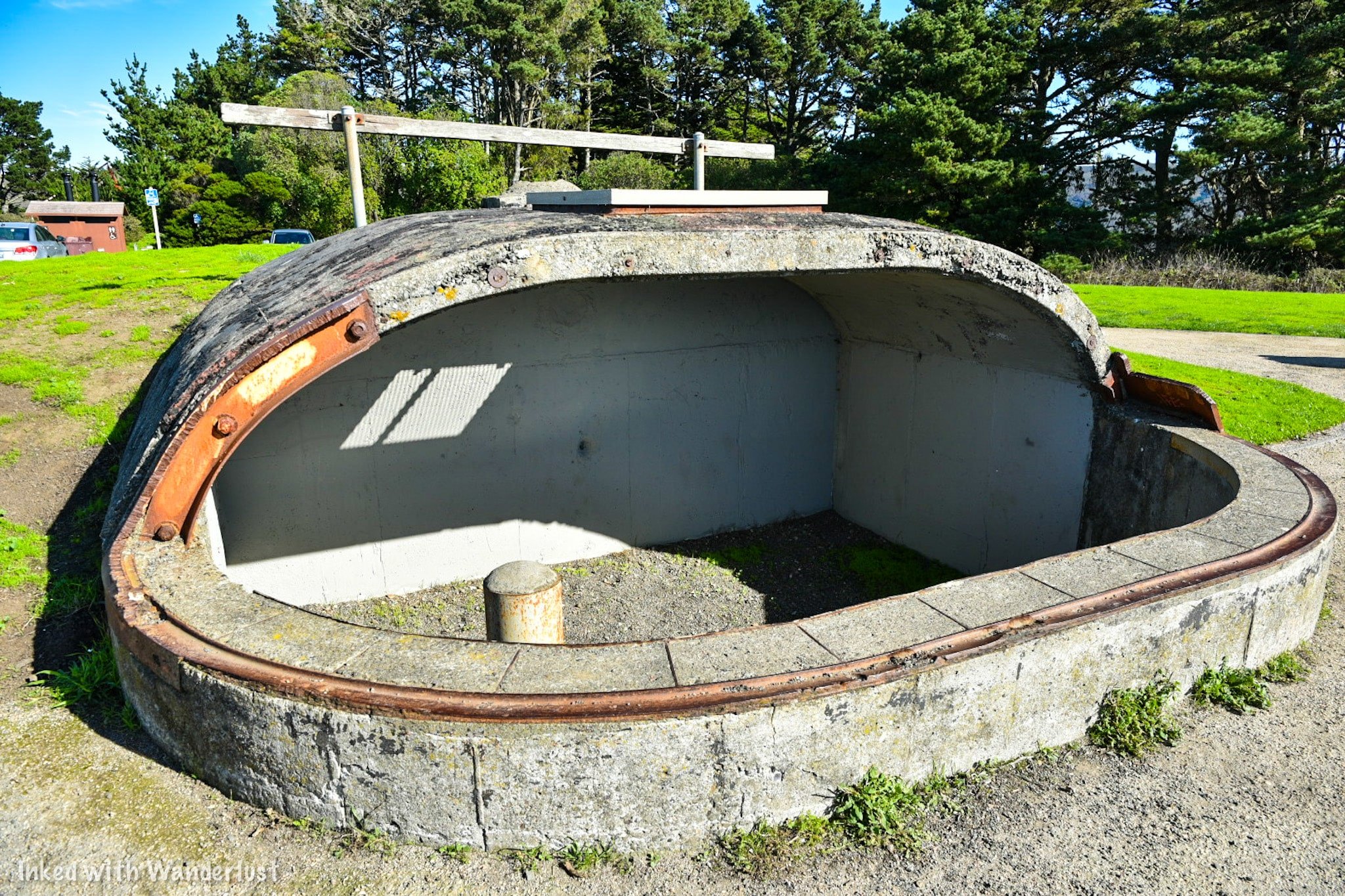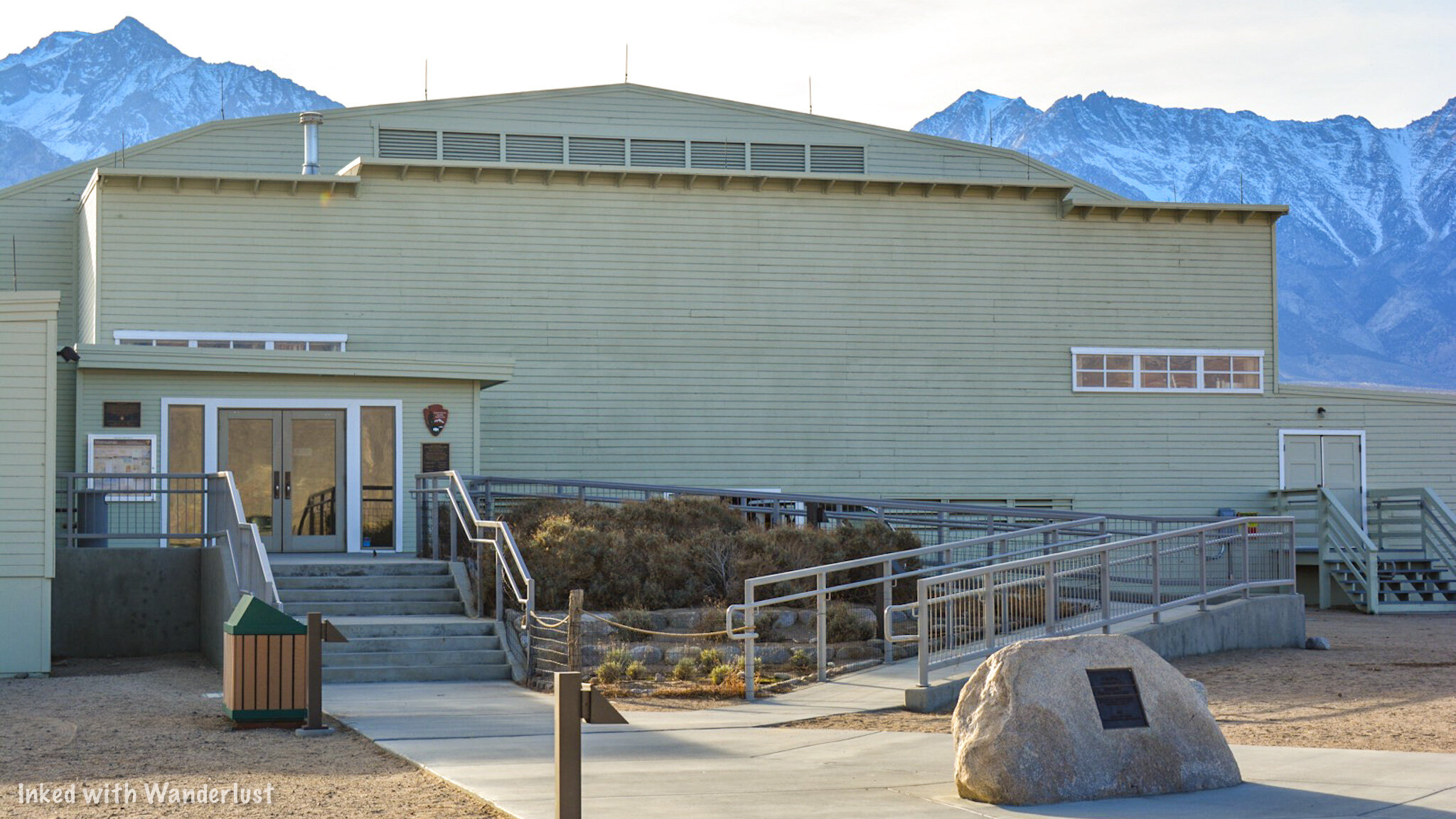Visit Marshall Gold Discovery Site near Placerville
Of all the historical sites in the great state of California, Marshall Gold Discovery State Historic Park in Coloma is right up there as one…
Disclosure: This post contains affiliate links. If you make a purchase through these links, I may earn a small commission at no additional cost to you. I only recommend products or services that I believe will add value to my readers.
Of all the historical sites in the great state of California, Marshall Gold Discovery State Historic Park in Coloma is right up there as one of the most significant. The reason? It’s the site where gold was first discovered in 1848, two years prior to California becoming a state.
The man who made this remarkable discovery, James W. Marshall, found several shining flecks of gold along the South Fork of the American River in the tail-race of the sawmill he was building in partnership with a man named John Sutter.
This find was indeed significant, yet consequential, as it spawned the largest migration of people in the Western Hemisphere. Once word got out the (gold) rush was on, as thousands of miners made their way to the golden hills of California to earn their own fortune.
It’s important to remember that at the time Marshall made this discovery, Coloma (as well as most of Northern California) was largely inhabited by the Nisenan Indian Tribe. They called this place, Cullumah, which means “beautiful valley”.
Today, the California State Park agency runs this massive site. In it, there are multiple examples of replicated buildings, a visitor center, the burial site of James Marshall, a monument marking the spot of gold discovery, a replica of Sutter’s Mill, and more.
MARSHALL GOLD DISCOVERY SITE PARKING & FEES
There are actually two spots where you can start your day at Marshall Gold Discovery Site; the main area near the visitor center and up the hill at the James Marshall Monument. To avoid confusion, type “Marshall Gold Discovery Site Visitor Center” or “John Marshall Monument” into your GPS of choice.
I didn’t know that going in and just entered “Marshall Gold Discovery Site” into Apple directions and was taken to the hill near the monument and worked my way down from there. You can’t go wrong with either, it’s simply a matter of preference.
Up the hill at the monument is a medium-sized paved lot capable of holding a few dozen vehicles. There is no digital pay station here, just the old school iron ranger when you fill out the envelopes. Be sure to bring exact change.
Below at the visitor center, you can pay your entry fees to the staff inside (you can pay with debit cards here). Either way, be sure to place your receipt on your dashboard so you don’t end up with a ticket.
Fees at Marshall Gold Discovery State Historic Park are:
$10 per vehicle
$9 per vehicle (seniors 62 and over)
The day-use areas are open to the public at 8am, no matter the time of year. However, it closes at 6pm from Labor Day to Memorial Day and 8pm during the summer months. The visitor center opens at 9am and generally closes at 4 or 5pm.
Marshall Monument/Burial Site
As stated above, my wife and I started on the hill at the Marshall Monument. The monument is impressive, as it’s California’s first historic monument and is the final resting place of James W. Marshall himself.
At the top of the monument is a bronze statue of Marshall. In it, he’s pointing downward to the spot on the South Fork of the American River where his discovery changed the course of California history forever.
Marshall passed away on August 10, 1885, totally penniless. Since he couldn’t contain news of the gold discovery and bigger, stronger miners began to show up, Marshall was muscled out his spot before he could finish constructing Sutter’s Mill.
Ironically, neither Marshall nor Sutter profited from their discovery. In 1886, a year after his death, the monument was constructed. Four years later in 1890, the bronze statue was created and placed on top of the monument. In 2010, it was re-dedicated to honor Marshall on his 200th birthday.
From the monument, begin your slow descent down the hill in your vehicle. A mile or so past Marshall Monument is where you’ll find Marshall’s cabin that he built shortly after arriving in Coloma. He occupied the cabin from 1856 to 1870.
Adjacent to the cabin is an old pioneer’s cemetery and further down from there is the highly-historic (and beautiful) Emmanuel Church, which was built in 1855 and was the first Episcopal Church in California.
You can’t go inside either the church or the cabin, unfortunately. Though there are several windows you can look through. To my knowledge, the items displayed inside the cabin are not original.
You can park in the small pull-out adjacent to the cabin and walk to all three of these attractions. When you’re done exploring, get back in your car and continue down the road. You’ll see signs pointing the way to the visitor center.
At one point, you’ll be driving through a street lined with houses. Some of them are currently occupied, but others are not and have historical markers next to them that you can read.
Visitor Center and Sutter’s Mill Replica
When you reach the bottom of the hill you should arrive to the visitor center. I know visitor centers are sometimes skipped by visitors, but give this one a look. There are dozens of exhibits and artifacts inside detailing the history and development of the area.
The museum pays tribute to Native Americans, who previously inhabited this area. It also details the discovery of gold in the river and the gold rush that proceeded it. Additionally, there’s real-life examples of pioneer wagons, gold-panning tools, clothing and more.
All around the road cutting through Coloma and surrounding the visitor center are numerous replicated and real-life historic structure exhibits. This includes a schoolhouse, Chinese store, a blacksmith’s shop, and others.
Just down the way from the visitor center is the ruins of the Coloma Jail, which was the first known jail in the state. The cells aren’t accessible to visitors, but they’ve pulled one outside of the ruins that you can see.
Nearby, you’ll find exhibits detailing the presence of the Nisenan people who called this region home. The biggest and most significant of which are the bedrock mortars, or “grinding rock”. It’s a huge rock with dozens of near-perfectly round shaped holes seemingly drilled into it.
The Native people used these grinding rocks to ground acorns for food, which was their main diet. According to a park ranger, the depth of the holes indicate that the Nisenan people were likely in the area for 1,000 years or more.
Across the street from the Native American exhibit is where the (arguably) biggest attractions of the park are located; the replica of Sutter’s Mill (what James Marshall used to mine for gold) and a monument placed on the spot of the first discovery.
The spot where the replica sits is not the original location. It was actually closer to the river’s edge, about where the monument sits now. There’s much debate as to if that monument is even in the correct spot but according to a ranger I spoke with, it is correctly placed.
The monument sits behind the Sutter Mill replica, right on the edge of the river. It’s largely made of stacked stone and has a bronze plaque in its center which reads, “This monument marks the site of John A. Sutter’s sawmill. In its tail-race, on January 24, 1848, James W. Marshall discovered gold and started the great rush of Argonauts to California”.
On the other side of Sutter’s Mill is the newest structure in the park, a replica of the “Mormon Workers Cabin”. This cabin is where six Mormon Battalion members Sutter and Marshall hired to build the sawmill built and lived in. The cabin was completed on January 23, 1848, one day before Marshall’s discovery.
In fact, we know the exact date of the first discovery because of the journals of Henry Bigler and Azariah Smith, two of the Mormon workers. An example of these journal entries is framed and displayed inside the cabin.
During my wife and I’s visit, there were park employees dressed in pioneer garb, offering a presentation detailing the history and meaning of the cabin free of charge. It was a nice touch and added a lot to the cabin’s historical value.
There’s so much to see and do at Marshall Gold Discovery State Historic Park that you could literally spend the entire day here and probably not see it all. The park is huge and there are many exhibits to explore.
My wife and I had no idea just how much there was here. We thought it was just the monument, the sawmill, cabin, and visitor center. Since we were merely passing through, we didn’t have the time to see it all. So we’ll definitely be making a return visit.
If you want to come here (and I encourage you to do so) be sure to reserve at least half a day to explore the park (a full day would be preferable). You could always break for lunch at nearby Hog-Wild Barbecue in Placerville. If you’ll be in the area for more than a day, I highly suggest taking a self-guided tour of nearby Gold Bug Mine.
EXODUS 13:21
Hike Through the Historic Donner Summit Tunnels
When searching for the most unique and best hikes in Northern California, many will point to areas like South Lake Tahoe, Yosemite National...
Disclosure: This post contains affiliate links. If you make a purchase through these links, I may earn a small commission at no additional cost to you. I only recommend products or services that I believe will add value to my readers.
When searching for the most unique and best hikes in Northern California, many will point to areas like South Lake Tahoe, Yosemite National Park, and famed Mono County, and for good reason. Those areas have some of the most beautiful hiking trails in the state.
Just a bit outside of Lake Tahoe proper, near the historic gold mining town of Truckee, is one of the most unique hikes you’ll come across anywhere - the Donner Summit Tunnels.
The tunnels were built in 1867 to accommodate the first train passage through the Sierra Nevada Range. Built primarily by Chinese laborers, nothing but hand drilling methods and explosives were used to carve through the granite-based Mount Judah.
The tunnels saw the first train traffic shortly after completion in 1868, and were used as recently as 1993, when they were then decommissioned. Today, the property is still owned by Union Pacific, who have been kind enough to allow people to freely explore the tunnels.
So how do you get to the Donner Summit Tunnels? What’s the parking situation like? What can you expect on this hike? I answer all of these questions and more below. Let’s get into it.
Trail Stats
Location: Donner Summit in Norden, CA
Fee: None
Open: Mostly in Spring, Summer, and Fall. Difficult to impossible to access in Winter.
For: Everyone
Cell Service: Spotty
Restroom: None
Parking: Large dirt lot at the trailhead. There are also pull-outs on the side of the road, but you’ll be backtracking on the hike
EV Stations: None
Difficulty: Easy
Popularity: Moderate
Mileage: About 5-miles, out and back
Elevation Gain: Just shy of 400 feet. The trail is mostly flat
Condition: Not maintained, but completely doable
Features: Historic trail tunnels, China Wall, petroglyphs and vast views.
Pets: Allowed on leash
Drones: No signs prohibiting it, but I saw a few people flying theirs
Hazards: Uneven ground, loose gravel, low visibility, steep drop offs, and potential wildlife encounters.
My Visit(s): July 2024
Recommended Products for this Hike
Camera Tripod (you’ll need it for the low-light situations)
Citronella Spray (a Deet-free way to keep the bugs off of you)
DJI Drone (for even better photos/video of the area)
How to Get to Donner Tunnels
Most people access the Donner Tunnels from Interstate-80, as it’s easy and straight forward. If you’re coming from the direction of Reno or Truckee (westbound), take the Donner Lake Road exit. When you get to the bottom, turn right on Donner Pass Road to head up the pass.
Less than a mile after crossing the Donner Summit Bridge, look for the sign in the photo above (Sugar Bowl Road). You’ll turn left here. Shortly thereafter, look for an unmarked dirt road on your right. This will take you to the parking lot.
Coming from Sacramento (eastbound), you’ll take the Donner Pass Road exit for about four miles before turning right onto Sugar Bowl Road to the parking lot. If you’re coming from Lake Tahoe, you have a couple options:
From North Lake/Sand Harbor area: Make your way to North Shore Boulevard (CA-217) and go north. Then, merge onto I-80 west for a short time before taking the Donner Pass road exit and head up the summit to the parking lot.
From South Lake/Emerald Bay area: Travel north on CA-89 and continue onto Highway 28, before turning left onto North Shore Boulevard (north). From there, follow the same directions as described above.
Donner Tunnels Parking Lot and Trailhead
The parking lot for Donner Tunnels is a circular dirt lot with no actual parking spaces laid out. It’s essentially park wherever you can find space. If you arrive early (like I did), you’ll have no trouble finding a spot. Later in the day is when it starts to fill, as shown in the photo above.
While any vehicle can access this lot, I do need to warn you about all of the tire-busting rocks. Union Pacific doesn’t maintain this lot at all and as such, there are rocks all over the place that have the potential for ruining your day. Take it slow and you should be fine. The good news is there’s no parking fee.
The unsigned trailhead is located just off the parking lot through a heavily graffitied red gate. You’ll find the first of several tunnels after you walk underneath the road you took to get here.
Donner Tunnels Hike
From here, you’ll work your way through a series of tunnels, each with a varying level of length (and graffiti). The first one from the parking lot is fairly long and dark, but you’ll always have the light at the end in sight.
Don’t be fooled by the amount of light in the photo above. That was me using my camera’s settings so I could show you the detail. It’s actually very dark in here and in my opinion, a cell phone flashlight doesn’t cut it. Which is why I recommend bringing a flashlight with high lumens.
In these tunnels and the upcoming ones, you’ll likely hear, smell, and possibly even see bats in the tunnels. We never saw them, but we did hear and smell them. As is the case with most wildlife encounters, don’t go looking for trouble and you likely won’t find it. In other words, don’t bother them.
After the first tunnel, you’ll briefly enter a snow shed before walking back out into a clearing with sweeping views of Donner Lake and the surrounding mountains. On this stretch, you’ll pass by some petroglyphs on your left and walk over the historic China Wall (pictured below) before entering the next tunnel.
The China Wall is a 75-foot high hand-built retaining wall that helped keep the trains propped up as it passed between the two tunnels. Take a moment to check it out. It’s amazing what the laborers were able to accomplish without the help of modern equipment.
Also along this stretch is the ability to climb up onto the top of the tunnel you just left. You’ll get an awesome perspective for photos. Just be careful as there’s no established way up and the granite rocks are slippery. Going back down is a bit sketchy.
From here, you’ll enter the next tunnel and go through a series of several more. You’ll go through sections where enough light passes through the slits in the walls, enabling you to see without a flashlight. Then you’ll hike through sections of near-complete darkness as well.
On top of the darkness, the ground you’ll be walking on is on uneven, loose gravel with occasion larger rocks. Additionally, and particularly if you’re here while the snowpack is still melting, you’ll also have standing water and potential icy spots to traverse.
The walls of the tunnels are literally covered in graffiti. Some are actually artistically well done while other pieces are simply words/political statements or nondescript images. While I do think it’s a shame that a historical site like this has graffiti all over it, I have to admit that it does add a certain vibe to the overall experience.
If you’re bringing small children, be warned that some of the graffiti art is highly inappropriate for young eyes. Thankfully, most of it is difficult to make out, or even see in the darkness, so I wouldn’t let it stop you from bringing them. Just something to be conscience of.
The hike can be as short or as long as you want it to be. During our hike, I noticed most people turn around after the second tunnel, but I recommend sticking it out and keep going to the end of the final tunnel. If you do, you’ll be rewarded with an epic, unobstructed view of Donner Lake (especially if you climb on top of the tunnel).
In conclusion, this hike is fantastic. Even if you don’t care about the historical aspect of it, it’s worth it for the views and photography opportunities alone. Additionally, because there’s so much to explore, you could hike the Donner Tunnels multiple times over and always see something new.
When you’re finished, consider heading over to nearby Donner Memorial State Park and see the site where part of the ill-fated Donner Party attempted to wait out winter and fight off starvation. Additionally, Emerald Bay State Park is about an hour away and more than worth the drive.
EXODUS 13:21
Visit Gold Bug Park in Placerville: Mine Tour, Historic Stamp Mill, Hiking and More
Located in the historical town of Placerville in Northern California, Gold Bug Park features hiking trails, gem panning…
Disclosure: This post contains affiliate links. If you make a purchase through these links, I may earn a small commission at no additional cost to you. I only recommend products or services that I believe will add value to my readers.
Located in the historical town of Placerville in Northern California, Gold Bug Park features hiking trails, gem panning, a historic stamp mill and the park’s main attraction, Gold Bug Mine.
Originally called Hattie Mine, it was constructed in 1888 by William Craddock and John Drench. The original name, Hattie, was the name of Craddock’s oldest daughter.
The mine would change ownership several times throughout its operation and would eventually cease operations in the 1940’s.
Today, the park and mine are open to the public for self-guided tours via a handheld audio device. It may not be as impressive as Bodie, but Gold Bug Mine is a fantastically preserved example of California’s rich mining history.
In this post, I’ll discuss a variety of topics, such as what to expect during the tour, entry fees, parking and more. At the end, be sure to let me know in the comments if this is a place you and your family would enjoy visiting. Let’s get into it.
Getting There, Parking & Entrance Fees
Gold Park Park is conveniently situated almost right off US-50 and only around 45 miles from Sacramento, and 60 miles from the heart of South Lake Tahoe. It’s also an easy visit from nearby Apple Hill.
From US-50, take the Bedford Ave. exit and continue for a mile before turning right onto Gold Bug Ln and into the parking lot for Gold Bug Park.
Parking is fairly limited near the visitor center, but there is a much larger lot further up the road near the stamp mill, if needed. Both options are free, by the way.
From the smaller lot, there’s a wooden boardwalk leading to the mine entrance. To the left of the boardwalk is where gem panning takes place and to the right is the visitor center.
To get to the entrance to Gold Bug Mine, go up the stairs from inside the visitor center to the check-in desk. There is where you’ll pay your entry fees.
In this room, there are several exhibits of mining artifacts, some of which were discovered in Gold Bug itself. One such exhibit is a caged canary (pictured below) which miners used as a way to detect the presence of carbon monoxide.
With their small size and rapid breathing rate, canaries would quickly succumb to the effects of carbon monoxide, giving the miners a heads up to looming danger.
While guided tours are offered from time to time, self-guided tours are what most visitors will experience. Fees for the self-guided tour are as follows:
$12 - Adults
$10 - Senior (55+) and Military
$6 - Youth (6 - 17 years)
Free - Ages 5 and under
In 2024, Gold Bug Mine is open from 10am - 4pm, with no new tours allowed after 3:30pm. Additionally, those under the age of 18 must be accompanied by an adult.
Prior to the tour, each person will be given a handheld audio device (no headphones) and an optional yellow hardhat. To begin your tour, simply exit the room to the adjacent mine entrance.
Gold Bug Mine Self-Guided Tour
The entrance to the mine is tall enough for most people to walk through without having to bend down the entire time. Additionally, the floor is easy to traverse as it’s been boarded. It’s fairly slim in some spots, so groups going in opposite directions would need to step aside to allow the other to pass.
The 353-foot long mine drift has several yellow cards, each with a number, placed into the wall at about eye level. These cards indicate when to start playing your audio device to hear the narrator’s discussion of that particular section of the mine.
If I remember correctly, there were twelve stops in total, with each stop taking three to five minutes for the narration, plus however long we stayed to look around and take photos. You can pause and play the device as you go. There is no time limit.
We were lucky in that we had the mine to ourselves for the majority of our time there, with a small group arriving while we were working our way back out.
Based on that brief encounter with the other group, I can see it being difficult to concentrate on the narrator on your own device when there are several others playing concurrently.
While trying to listen to the last one or two sections, we kept hearing the other groups narrator from the echoing in the mine, which was a bit distracting. So arrive early or outside the summer months to avoid a crowd if that’s important to you.
At the terminus of the drift, you’ll see an ore cart that was actually used in the mine. Additionally, you’ll see several examples of how dynamite was used by the miners.
We spent a little more than an hour exploring the mine. This included time to listen to the narrator at each stop, as well as to look around and taking photos.
When finished, you’ll simply make your way out of the drift and back to the check-in desk to turn in your audio device. From here, there are several other attractions to explore, including hiking trails and the historic stamp mill.
Joshua Hendy Stamp Mill & Hiking Trails
To get to the stamp mill from the mine, walk or drive further up the road to where it terminates at another parking lot. It’s housed inside a grey-colored building, the entrance of which can be found by walking up the dirt path.
The stamp mill will be recognizable right away, as its commanding presence hits you as soon as you enter the building. The interior is multi-level, allowing for multiple views of the stamp mill.
On the bottom level, there’s a working scale model of the stamp mill that demonstrates the ore crushing process, as well as several mining artifacts on display.
After checking out the stamp mill, be sure to exit the building and head further up the dirt path to see a live blacksmith demonstration. Additionally, back at the parking lot, there’s the trailhead for the Springhill Trail.
I didn’t hike it, but from the trailhead I saw these interesting, multi-colored trees so I walked to the top of the hill to check them out. The inside portion of the branches were grey, with the outside being bright red. They were incredibly cool to look at and photograph.
Gold Bug Park has something for everyone and is a fantastic example of how important it is to preserve our history whenever possible. I feel everyone, from history buffs to families, would enjoy their time here. If you have more time, consider visiting nearby Marshall Gold Discovery Site, the site of the first gold strike in California!
Planning a trip to Northern California? Read 10 Awesome Things to Do in Yosemite Valley on Your First Visit. If considering Lake Tahoe, read Emerald Bay State Park Guide. Also check out The Complete Guide to Muir Woods National Monument.
Unveiling The Magic: Visit The Walt Disney Museum In San Francisco
Welcome to the enchanting world of the Walt Disney Family Museum, nestled in the heart of San Francisco’s historic Presidio…
3 minute read | contains affiliate links
Welcome to the enchanting world of the Walt Disney Family Museum, nestled in the heart of San Francisco’s historic Presidio.
Stepping through its doors is like embarking on a journey through the life and legacy of one of the greatest visionaries of our time. As you explore the exhibits, you'll be transported to a time where imagination knew no bounds.
From the earliest sketches of beloved characters to groundbreaking technological advancements in animation, this museum offers a truly immersive and multimodal experience that engages all your senses.
Join us as we delve into the magical realms created by Walt Disney and unravel the extraordinary story behind the man who forever changed the landscape of animation.
Get ready to be inspired, amazed and filled with childlike wonder as we embark on a tour of the Walt Disney Family Museum in San Francisco.
I’m going to be somewhat vague in the descriptions of exhibits and the museum itself, as I highly encourage you to see it for yourself and I don’t want to spoil it.
Disclosure: This post contains affiliate links. If you click through and make a purchase, I may earn a commission at no additional cost to you. Thank you for supporting us!
Location, Parking & Admission Fees
The Walt Disney Family Museum is located in the historic Presidio in beautiful San Francisco, just a stone’s throw from the Golden Gate Bridge.
The museum’s address is:
104 Montgomery Street
Entering that address (or simply the museum’s name) into any GPS device will place you directly in front of the museum, where the closest available parking is.
If there’s no parking available there, you can try the Main Post Parking Lot (across the Main Post Lawn) or behind the museum in the Taylor Road Parking Lot.
Keep in mind that parking is metered credit/debit cards (as well as cash) is accepted.
Admission fees to the museum are as follows:
Adults: $25
Senior (65 and up): $20
Student (w/ ID): $20
Youth (6-17): $15
Child (5 and under): Free
Military (active, veteran, or retired): Free
Military Spouse/Dependent: Free
These prices pertain to the main museum only. The museum features regular special exhibits on a rotating basis. If you want to tour those exhibits, add $5 to the prices above.
When buying your tickets, you’ll be asked to select an arrival date and entry window. This is to help the museum with over-crowding.
I had no issue getting tickets the day before and even though we arrived past our entry window, we were still able to get in. I can’t guarantee they’ll be lenient every time, though.
The Walt Disney Museum
When you walk inside you’ll be greeted, be asked to show your tickets and be given a quick breakdown of the museum and where everything is.
To the left of the entrance is the cafe and gift shop. To the right are some exhibits to see while you wait for your entry time if you arrive early.
At the podium, you’ll present your tickets and be given a quick explanation of the camera/filming policy before proceeding into the first room.
*I was told that pictures and video were fine, but that flash photography was prohibited. Most cameras, including those with detachable lenses, are good to go.
The first room you’ll enter is on the ground floor and details Walt’s early life. You’ll learn about where he was born, his earliest entry into the world of cartoons and his service in the Red Cross during World War One.
When you’re done looking around, head to the elevator in the next room and take it to the next floor where the remaining museum exhibits are located.
Coming out of the elevator, the next few rooms are a treasure trove of the early works of Disney animation and the equipment Walt and his animators used.
The first room heavily focuses on the musical animated classic series, Silly Symphonies. These musical shorts were the bread and butter for Disney at the time and would pave the way for musicals we all love such as, Beauty and the Beast and Frozen.
The next room details the beginning stages of the development of Disney’s first full-length animated move, Snow White and the Seven Dwarfs.
The walls are adorned with early sketches, rough drafts of the script, props, images and more. It’s a literal treasure trove of all things Snow White.
You’ll also see the multi-pane camera Walt and his animators invented in order to create the multi-dimensional look of their films.
This gave their movies depth rather than having that “flat” look that other animated features of the time had. Past that, you’ll see examples of how Disney began diversifying their character roster.
Next, you’ll learn about the Hollywood writer’s strike of 1941 and how it affected the relationship Walt had with his animators.
The exhibits also detail the events of World War Two and how Disney did his part to help keep the moral of the troops up.
From here, you’ll make your way into what I refer to as the, “transition room”. The walls are lined with screens where clips from some of Disney’s most beloved films play.
It’s a dark room with plush seating in the center, allowing you to rest and comfortably view the clips and images that rotate on the screens.
After the transition room, you enter a beautifully lit hallway with floor to ceiling windows allowing for a commanding view of the Golden Gate Bridge.
At the end of this hallway is one of the actual benches from Los Angelas’s Griffith Park. Walt brought his kids to this park numerous times and sat on this very bench (and others).
It is these benches where Walt’s idea for Disneyland first came about. He was watching his kids ride the carousel and thought to himself, “there outta be a place where kids and their parents could have fun together”.
As you move past the Griffith Park bench you’ll enter the final and perhaps most popular exhibit in the museum; the development of Disneyland.
As you work your way down the spiral ramp you’re surrounded with images and props used during creative sessions and the construction phase of Disneyland.
At the end of the ramp is a beautifully rendered model of Disneyland called, “The Disneyland of Walt’s Imagination”.
The model isn’t an exact representation of the park, but more of a, “fun map-style”, model. This allows for each of the park’s most popular aspects to be highlighted without regard to scale. Tony Baxter, a famed Disney Imagineer, is responsible for the idea.
The model was easily the most popular exhibit. Not just in this room, but in the museum as a whole. After admiring the model, your visit to the museum concludes with a touching tribute to Walt.
The final room covers his final days and the impact his death had on not just the entertainment idustry, but the world. It’s easy to see how special Walt was and how we’ll never have another one quite like him.
I hope you’ll consider paying a visit to the Walt Disney Family Museum. If you’re a Disney fan, particularly of its history, you’ll enjoy it immensely.
If you’re considering a vacation to Disneyland, doing proper research is imperative. Head over to our Disneyland section for many planning resources.
Recommended photography products (opens new link to Amazon)…
Disclosure: This post contains affiliate links. If you click through and make a purchase, I may earn a commission at no additional cost to you. Thank you for supporting us!
Please support our website by subscribing to our newsletter below.
Thank you for reading.
How To Visit The Bridge From 'Stand By Me’ In Burney
The 1986 Hollywood film, ‘Stand By Me’, wasn’t exactly a box office hit but over the years it has since gained a strong cult fan…
Disclosure: This post contains affiliate links. If you make a purchase through these links, I may earn a small commission at no additional cost to you. I only recommend products or services that I believe will add value to my readers.
The 1986 Hollywood film, ‘Stand By Me’, wasn’t exactly a box office hit. Over the years, though, it has gained a strong cult following. If you’re a part of that following (and since you’re reading this i’m assuming you are), you undoubtedly remember that infamous bridge scene.
You may not realize this, but that scene wasn’t filmed in Oregon. It was filmed just down the road from Burney Falls in Burney, California. While it was taken out of service early into the new millennium, it still stands to this day and can be easily visited by anyone who wishes to.
So where is it? How do you get there? We answer these questions and more in the post below. Let’s get into it.
A Quick Word…
While you’re still permitted to visit the location of the bridge, the bridge itself has been blocked off. Accessing the bridge is no longer permitted due to the 2021 death of a Reno, NV man.
Getting to the Stand by Bridge
The bridge from ‘Stand by Me’ is located just a short drive away from the central part of Burney, California. From famed Burney Falls, it’s just a couple minutes away.
If you’re coming from Burney (whether the town or the waterfall):
Head north on highway 89 (if you’re at Burney Falls, take a left out of the park).
Shortly after crossing over Lake Britton, and driving through the overpass, take a (very) hard right onto Eagle Mountain lane.
You’ll continue on the dirt road for about a quarter mile before arriving at the bridge on your right.
If you’re coming from the opposite direction, such as McCloud or Dunsmuir, you’ll simply go south on highway 89 before taking a left onto Eagle Mountain lane.
Milage from additional cities and parks include:
Burney Falls: 2.5 miles
Lassen National Park: 43 miles
Redding, CA: 67 miles
Reno, NV: 168 miles
Medford, OR: 138 miles
Brownsville, OR: 338 miles
The dirt road going to the bridge is navigable for just about any vehicle. Our compact made it just fine. Though there are some potholes to keep an eye out for. There is no official parking lot, but there’s an open area of dirt on the side of the road that serves that purpose. Just find a spot that makes sense.
The ‘Stand By Me’ Bridge
The first thing you’ll likely notice is the blockade placed in front of the bridge. Prior to 2021, walking across the bridge was permitted. Since 2021, when a Reno man was killed after jumping from the bridge, a barricade was put in place and access to the bridge became prohibited.
Thankfully, there are open slots between the cement blockade and barbwire where you can get a clear photo of the bridge itself.
Despite the bridge being blocked off, it’s still worth a visit. Particularly if you’re a fan of the movie. Even if you’re not a fan, it’s a historic bridge with amazing views of the lake and surrounding hills. You can get those views on either side of the bridge.
I can’t say for sure, but it’s likely possible to access the bridge from the other side via the Burney section of the Pacific Crest Trail (PCT). Along the Burney Falls Scenic Loop there’s a point in which you can access the PCT. I’m not sure of the milage, though. I suggest hiking for a couple miles until you see what looks like old train tracks and follow those towards the water.
PSALM 91
The Ultimate Guide To Visiting and Touring Alcatraz Island
Welcoming more than 1.4-million people annually since opening its doors to tourists in 1973, Alcatraz is one of the undisputed top rated attractions…
Welcoming more than 1.4-million people annually since opening its doors to tourists in 1973, Alcatraz is one of the undisputed top rated attractions in San Francisco.
Its rich, yet complicated history makes it appealing to anyone with even a remote interest in the subject. While its gone through multiple stages of claims and ownership, what it’s most famous for is its service as a Federal Penitentiary.
From 1933 to its closing in 1963, Alcatraz, or simply, “The Rock”, housed some of the most notorious inmates in the United States, including; Al Capone, George “Machine-Gun” Kelly, Bob Stroud, and Roy G. Gardner.
Though many have tried, Alcatraz was considered inescapable. Most escape attempts ended in surrender or death of the escapee. Five inmates, however, were never found. Assumed to have drowned in the frigid waters of the bay.
These days, visitors are welcomed and tours of the cell house and island are offered daily. With the click of a mouse, you can visit this historic place for yourself.
This guide will cover everything you’ll need to know, including; making reservations, prices, tour types, and history. You’ll also get sneak peaks of what you’ll see during the tour of the cell house tour.
NOTE: This post is long. At the top of the page, you’ll find jump links to the four major sections of the post. While we encourage you to read the whole thing, if you’d rather skip to what you’re most interested in, just click or tap to go to that specific section.
History of Alcatraz
Military Period (1850 - 1933)
Alcatraz’s notoriety started back in 1850 when, at the behest of a joint Navy and Army commission of implementing a “triangle of defense” to guard San Francisco Bay, President Fillmore signed an executive order to secure land around the bay for such use. This included Alcatraz.
Construction on the lighthouse was completed in 1854, beginning its service as the first lighthouse on the Pacific Coast. By 1859, 87 men of Company H, Third US Artillery took post on the island and by 1863 would take their first prisoners by seizing a confederate ship and imprisoning its crew.
The prison was heavily used during the Spanish-American War and by its conclusion in 1898, Alcatraz would be severely overcrowded. This resulted in the building of the upper prison on the parade ground at the turn of the century.
In 1912, the new cell house (the one you see today) was built. It was constructed using convict labor and finished in the same year. This would be the final cell house built under Military supervision.
By 1930, the Federal Government was in need of a tough prison that could house a criminal population that was either too dangerous, too difficult, or had a high potential for escape. So in 1933, Alcatraz was transferred to the Feds and began its service as a Federal Penitentiary.
Federal Penitentiary Period (1934 - 1963)
The whole goal of the Federal Government was to have a prison that criminals feared. ‘The Rock’, fit the bill and quickly earned a reputation of being tough, miserable, and impossible to escape from. The cells were small (even by prison standards) and frills were minimal.
A man by the name of James A. Johnston would be appointed as its first Warden and would go on to serve for 14-years, nearly half of its operating years. Warden Johnston implemented many rules and other security features such as fortified bars, strategically-placed guard towers, and a dozen inmate counts per day.
Though it had a reputation of being “escape-proof”, some inmates challenged this as several attempts were made, most of which resulted in surrender or death of those involved. There are two notable attempts we will briefly cover.
Battle of Alcatraz
In 1946, several inmates planned and executed an escape attempt that quickly went awry and resulted in the deaths of all inmates directly involved and two guards. Not to mention over a dozen additional guards getting severely injured.
The three main inmates never made it out of the cell house and, after refusing to surrender, died in a hail of gunfire in a small utility corridor by Guards and U.S Marines. If you would like to read about it from the point of view of an inmate who was there, read:
Inside Alcatraz: My Time on the Rock: by Jim Quillen (highly recommended)
Frank Morris & The Anglin Brothers
Probably the most famous escape attempt, due to a Clint Eastwood film being made about it, is the one by Frank Morris and brothers John & Clarence Anglin. The men spent several months chipping away at the deteriorating walls around the vent at the rear of their cells.
They also made dummy models of their heads out of paper, plaster, and real hair, placing them in their beds to fool guards into thinking they were asleep. Sometime after final count on June 11th, 1962, the three men made their move by squeezing through the vent and to the roof through the utility corridor.
They successfully made it to the island’s north shore without being detected, hastily constructed a raft made from 50 raincoats, and headed out into the frigid waters, never to be seen again.
The official conclusion from the Warden was the men drowned. In reality, no one knows for sure. The water temperatures in the Bay are notorious for being very cold with strong currents. Their fate remains a mystery to this day.
Book - Escaping Alcatraz: The Untold Story of the Greatest Prison Break in American History
While successful in building an image feared by criminals, Alcatraz would prove itself to be too costly. The salty ocean air was slowly deteriorating the prison. Rising maintenance costs and other ongoing expenses proved to be too much. By order of Attorney General Robert F. Kennedy, Alcatraz was closed in 1963.
Tribal Occupation Period (1969 - 1971)
In 1969, an activist group called, “Indians of All Tribes”, landed on Alcatraz with the intent of reclaiming it as Native-American land. They did so in the name of an 1868 treaty that allowed for Indians to reclaim unused federal land. They wanted to redevelop the island into an Indian cultural center and school.
As is often the case, the federal government didn’t agree with their interpretation of the treaty and swiftly began negotiating with the group. It soon became clear that the group would settle for nothing less than complete ownership of the island. Soon, the group of activists on the island would swell to over 300 people.
When negotiations went nowhere, the Feds cut power to the island and used other tactics in an effort to remove the activists. In 1970, after the death of his young Daughter on the island, the leader of the group, Richard Oakes, left the island.
Eventually, more activists would leave and by 1971, just a handful of men, women, and children remained. At this point, the Feds moved onto the island and removed them. While technically defeated, the actions here inspired many Indian related protests at locations across the country, including Mount Rushmore and Plymouth Rock.
If you want to read about the Indian occupation in greater detail (and we suggest you do), read this article. They give a great account of what happened, why it happened, and the end result.
National Park Period (1973 - Present)
During Alcatraz’s operational years, there were only a few ways you could go to the island; you were either working there, incarcerated there, or visiting an inmate. That changed in 1973 when Alcatraz was transferred to the National Park Service and began offering public tours.
The NPS has done a wonderful job maintaining the island and keeping the facilities as authentic as possible while allowing the public to get up close and personal to what was once described as, “hell on earth”.
You, too, can visit and tour Alcatraz for yourself. However, there is a lot to know and you’ll need to be prepared. Now that we’ve gone over the general history of the island, lets get to the information you’ll need to know in order to go.
(Click to go back to top)
Visitor Information
Buying Tickets
Much like anything else, there is a fee to tour the island. The fee you’ll pay includes your entrance to Alcatraz, the cell house tour, and the round-trip ferry ride. Prices for the day tour are as follows (subject to change):
$41.00 - Adult (12 years old and up)
$38.65 - Senior (62 years old and up)
$25.00 - Child (5 - 11 years old)
$119.60 - Family Pack (Two adult & two child tickets)
As far as purchasing tickets go, you have two options:
Online: This is the preferable and easiest way. Often times, it’s the ONLY way. Tickets are known to sell out months in advance. So purchasing your tickets right when you decide on a date is the only sure-fire way. Alcatraz City Cruises is the official concessioner for Alcatraz tickets. You’ll see many others but they’re middle-men and you’ll end up paying more.
Purchase Day-Of: As stated above, tickets have been known to sell out far in advance. We’re not saying it’s impossible to get day-of tickets, but it’s not worth risking the disappointment. If you decide to go this route, head to Pier 33, scan the QR code at the entrance with your phone, see if there’s availability and if there is, make your purchase.
After you make your purchase, you’ll be emailed a receipt with a QR code (your tickets are contained within it). Simply screenshot it with your phone and present it to the ticket booth upon arrival. They’ll scan it and send you on your way. As always, be sure to print a copy just in case your phone dies.
Types of Tours
While the day tour is the most popular, there are two other types of tour you should be aware of:
Night Tour: Limited to just a few hundred visitors per night, the night tour gives you the opportunity to see a sure-to-be spectacular sunset over the Golden Gate Bridge and experience the island in the dark. Prices are similar to that of the day tour but cost just a bit more.
Behind the Scenes Tour: Ever walk by a spot on the tour with the dreaded, “closed to the public”, sign? Here’s your chance to go to THOSE areas. While pricey, you and a group of no more than twenty are taken to areas of Alcatraz seldom seen by the public. Areas such as special gardens, the underground jail, and the tunnel that stretches from one end of the island to the other.
Best Time to Go
There’s really no bad time to visit San Francisco but in our opinions, September - November is best. Temperatures are warm but not unbearable and crowds are minimal.
Winter is when you’ll get the best deal on hotels but you’ll also be contending with regularly occurring rain showers. Spring is good due to mild temps and rain is nearly non-existent.
Summer, as you guessed, would be our least desirable time of year to go. It’s hot, crowded, and everything is pricier than usual. If you can help it, try either spring or fall.
Pier 33 - Alcatraz Landing
Location
Your journey to Alcatraz begins and ends at Pier 33 on the Embarcadero. The simplest and best ways to get there is by either walking, taking public transit, or a ride sharing option.
If you need to drive, parking can be found at Pier 29.5 (adjacent to Pier 33), across the street from the Exploratorium, a parking garage across from Pier 39, behind the ferry building, and other locations nearby. They all charge their own fees.
The boarding area contains multiple informative displays and a scaled model of what the island looked like when the prison was operational. There’s plenty of seating scattered about and portable restrooms.
You’ll see the boarding queue up front and at the entrance will be a sign indicating which group is boarding (your group is the time you selected during your ticket purchase).
You can arrive as early or as close to your departure time as you like. However, it is recommended to arrive one hour prior as the vessel is loaded on a first come-first serve basis. You could end up having to wait for the next one if it’s full.
*Side Note: It is here where you can request a Braille and American Sign Language transcript of the cell house tour.
Arriving at Alcatraz
The Ferry Ride
The ride to Alcatraz is scenic and short, maybe 12-15 minutes. In fact, you’ll spend more time embarking and disembarking. If you’re going on a particularly busy day, be prepared for a cramped ride.
*Side Note: As of December 2021, masks are required in all boarding areas, on the vessel (ferry), and in all interior areas on the island. Vaccination status is NOT being checked.
Building 64 will likely be the first thing you’ll notice as you pull into the dock. The upper section was where the military barracks were. Soldiers protecting the bay and guarding the prisoners slept here.
The lower section was part of the fortification protecting the bay. Looking closely, you’ll notice large square holes around the lower section. Those were canon ports.
Before taking off, stop and listen to the Ranger presentation held in front of the bookstore. In it, the Ranger discusses the Indian occupation that took place on the island. You’re asked to take part in this but it isn’t required.
The small building across from the bookstore is the first of three restrooms on the island. There’s another adjacent to the entrance of the cell house and one more across from the administration building.
*Side Note: Take note of the sign displaying ferry return times. They vary according to day and the type of tour you’re on. Unless you grabbed a brochure, it would be a good idea to take a picture of this so you’ll know the next available ferry.
(Click to go back to top)
Cell House Tour
Getting There
To start the tour, walk parallel to Building 64 on East Road towards the guard tower. Before the tunnel (Sally Port), you’ll see a door on your left. This is the theater exhibit room. It wasn’t in operation when we were here, but we’ve seen it before and it’s worth checking out.
Here’s a few important details about the pathway to the cell house:
The walk from the dock to the cell house is a quarter-mile.
During this, you’ll have 130-feet of elevation gain.
This is the equivalent to climbing a 13-story building (spread out over a quarter-mile).
It does get a bit steep in some places but honestly, it isn’t difficult to get up there. I only mention this because most people don’t realize how the walk to the cell house is.
On the way up, the pathway spurs off in different directions. At these crossroads, you’ll see signage indicating the correct way to the audio tour. Just follow those.
If you have mobility issues of any kind, you can utilize the shuttle. It picks up at the dock and drops you off right at the cell house entrance (and vice versa). Oh, and it’s free.
Cell House Entrance
Audio Choices
When you see rotted bars with a sign stating, “Main Prison”, you’ve reached the beginning of the tour. Before heading in, you’ll need to make a decision on how you’ll plan to take the tour. You have two options:
Utilize their audio device.
Download the app and use your phone.
Each comes with they’re own negatives and positives. The audio device is small, but it’s in a thick plastic sleeve and due to covid, they no longer include headphones. So you’ll continuously need to hold it against your ear.
Downloading the app means you won’t have to worry about hearing the narrator through a sleeve as you'll able to use your headphones. The downsides are that it’s known to be buggy and the connection gets lost in some spots.
Neither is perfect but in order to hear the tour, you’ll need to do one or the other. We opted to use the audio device as we didn’t know about the app ahead of time and already drained the batteries on our AirPods.
Alcatraz Showers
After walking through the entrance, you will enter the shower room. The queue wraps around the showers to the other side, where you will pick up your audio device. Each person in your group will be given one.
When you reach the front of the queue, inform the attendant if you’ll be using the app or the device. If you choose the app, you’ll go right through.
If you want the device, inform the attendant of your language preference. You can choose between:
English
Spanish
Mandarin
Japanese
Italian
German
French
Dutch
Once you’re set, head up the stairs to the cell house (there’s an elevator for those with mobility issues). At the top of the stairwell, go left and look for a red sign (pictured below). Do not start the device/app until you reach this point.
Michigan Ave
When you reach this point, the tour officially begins. After you hit the green button, you’ll be introduced to the narrators, four former inmates of Alcatraz. They are:
Leon “Whitey” Thompson (Weapons charge, 1960 - 1962)
John Banner (Bank Robbery, 1954 - 1958)
James Quillen (Kidnapping, 1942 - 1952)
Darwin Coon (Bank Robbery, 1959 - 1963)
You’ll also hear from a couple former guards as well (unfortunately, we didn’t catch their names). Also, park officials swap narrators from time to time. So they may be different when you go.
The cell block you’ll see in front of you is B Block. Behind you is A Block, which was seldom used during the island’s run as a federal prison. Unfortunately, it is not part of the regular tour. To see A Block, you’ll need to book the “Behind the Scenes” tour.
The tour narrators will tell you when to stop, what to look at it, describe what you’re looking at, and which direction to go in next. This is why it’s imperative to pay close attention.
You will have the ability to pause the tour and rewind in case you get turned around, missed something, or want to linger in one spot for a while longer.
To the left of the sign with the narrators on it is the, “cut-off”, a passageway through the middle of B Block. You’ll go through here and turn right coming out.
Broadway
After going through the cut-off, you’ll turn onto, “Broadway”. This is the aisle between B and C Blocks. Your narrator will guide you to a few different cells with notable occupants.
Each cell on B and C Blocks are some of the smallest you’ll ever see. Grown men lived in cells that were 5 feet by 9 feet and 7 feet high. Most inmates could stretch their arms and easily touch each side of their cells.
You’ll work your way up Broadway towards what is known as, “Times Square”. When you reach this point, you’ll turn left and head towards the doorway leading to the Recreation Yard.
Recreation Yard
The Recreation Yard (or simply, “Rec Yard”), is where most inmates would spend a portion of their days. Some would play cards while others played handball. Some, simply, would sit and stare at the impressive views of the city and Golden Gate Bridge.
You will want to pause the tour and spend some time looking around the yard. If you look towards the back wall, you’ll notice an open, rusted door leading to a steep stairwell.
This is the door where inmates would march through to go to whichever job they held. They would have to go up and down these stairs on a near daily basis.
Feel free to spend all the time you want exploring the yard. Once you’re ready to resume the tour, simply head back the same way you came in. When you reach the doorway, hit start on your device and head straight to D Block.
D Block & Prison Library
Inmates who proved to be problematic for guards, i.e, got into fights, assaulted guards, or just didn't follow a specific rule, were sent to D Block. It was quickly given the nickname of, “Punishment Block”.
These cells were much bigger than the ones in the other blocks, but inmates were confined to them 24 hours a day (with the exception of their twice weekly showers).
Since they were completely confined to their cells, everything was brought to them by other inmates or guards. On top of that, the only two activities allowed here were reading and quietly talking to the inmate next to you.
The other feature of D Block, specifically on the upper tiers, was the view of the city. Inmates, however, said this was the worst part because when the wind blew towards Alcatraz, it carried sounds of people talking and laughing from the city, reminding them of how isolated they were.
Further down D Block is where you’ll find the infamous solitary confinement cells, also known as the, “prison within a prison”.
These cells were solid concrete with nothing but a toilet, sink, and a bed inside. No light source was provided so when the solid door was closed, inmates were in total darkness and could hear nothing.
If you want a small taste of what it was like, go to the cell at the very end. Both doors are left open and you are allowed to step inside. Although you cannot shut the door behind you, it will give you a sense of what the inmates experienced.
After D Block, your next step will be the prison library. It’s another example of a, ‘prison within the prison”, as you feel like you’re walking into a cage.
On arrival at Alcatraz, inmates were given a library card and were allowed three books at a time. This was in addition to a bible, text books, and approved magazine subscriptions (newspapers were prohibited).
Inmates weren’t allowed to come and go as they pleased, though. If they wanted to check out a book, they would fill out a slip and turn it in. The Librarian would find the book(s) and deliver them to that inmate’s cell.
There are benches in the library that you’re free to use if you need to sit-down for a bit. When you’re ready to move on, exit the Library and go right on “Park Ave.”
Park Ave., Good-Time Cells, & Visitation
Coming out of the library, the narrator will have you view a few of the cells on C Block on what is known as, “Park Ave.” These cells are referred to as, “Good-Time Cells”, as inmates in these cells were allowed paint supplies and other privileges.
From here, you’ll round the corner to view the visitation area, also known as, “Peek’n Place”. Here, inmates would visit their loved ones by talking to them through a phone and thick, glass barriers. Under most circumstances, inmates were allowed only one visit per month.
Head to the opposite side of the wall to see it from the visitor’s perspective. There would be a guard stationed here listening to all conversations. Among other topics, discussing current events was prohibited and could’ve resulted in privileges.
The area behind the visitation is where the administrative offices are. You can come back here after the conclusion of the tour. For now, head back down broadway.
Broadway & Dining Hall
Before arriving at the Dining Hall (the final room of the tour), you’ll take one last stroll down Broadway. On the way, you’ll stop to see the cells of Frank Morris and the Anglin Brothers. They took part in the greatest escape attempt in the history of Alcatraz.
You’ll see the vent in the back of their cells where they squeezed through to gain access to the corridor. They took advantage of Alcatraz’s deteriorating state by chipping away at the wall around the vent.
You’ll also see the plaster molds of their heads they constructed. They placed them in their beds at night to fool the guards into thinking they were asleep. In reality, they were in the corridor behind the cells working on the next phase of the escape.
The final section of the cell house tour is the Dining Hall. Here, hundreds of men would gather together for breakfast, lunch, and dinner, everyday. The guards would tell you that this was always the most tense part of the day as fights or riots could break out at any time.
To deter this, tear gas canisters were positioned in the rafters throughout the room that could be set off remotely. There was also an abundant of armed guards present. Despite these security features, a few riots have broken out here.
Inmates were given 20-minutes to eat and were not limited in how much food they could consume. The only caveat to this was no matter how much they took they had to eat it all, leaving no waste. If they made a habit out of doing that, it could result in the removal of privileges.
Hanging above the entrance to the kitchen is the menu of the final breakfast served at Alcatraz. Inmates reported the food here to be the best of any Federal Penitentiary they’ve been to.
By now, the narrator has concluded the tour and from this point forward, you’re free to explore the island at your leisure. Turn in your device to the booth in the middle of the room and head back down the stairs.
From there, you’ll come down the stairs and back into the showers. You’ll be directed to exit through the gift shop and when you do that, you’ll be right back where it all began at the cell house entrance.
(Click to go back to top)
Exploring the Island
Your visit to Alcatraz doesn’t end with the cell house tour. You’re free to spend as little or as much time here as you please as long as you’re off the island by the final ferry departure time.
At the conclusion of the tour, simply head back down the path and go from there. Having a map of the island would come in handy here but if you don’t have one, just follow the signage.
Southwest & Northwest Side
On the southwest side of the island (facing the Bay Bridge) is the administration building, the remains of the Warden’s house, the historic Lighthouse, and the ruins of, ‘Officer’s Row’ (where housing for the guards and their families used to be).
In the admin building, you’ll see the Warden’s office, control room, and other offices. You can also access the cell house from here if you want to see it again.
Outside the admin building is the former home of the Warden. As you can see in the image above, the elements and nature have taken over. As you’ll see when you’re here, though, the Warden once had an amazing view of the bridge and city.
Take the west road (pictured above) to see the Northwest side of the island. Here you’ll find a beautiful garden that was once maintained by the inmates.
The west road eventually terminates near the stairwell that leads back to the Recreation Yard. If you like, you’re welcomed to go back up there. If not, you’ll need to turn back and go the way you came in.
Southeast and Northeast Side
These are on the opposite side of the island. To get there, you have two options:
Go up the stairs through the recreation yard and cut through the cell house to the other side. You’ll go back down the stairs in the Dining Hall and out through the gift shop. Or….
Take the west road back to the Warden’s house and loop back to the other side on east road.
There are multiple historic buildings on this side of the island. Building 64, the Sally Port, the old Boat Dock, and (pictured above) the remains of the Officer’s Club.
Continuing straight away from the Officer’s Club is where you’ll find the Powerhouse, Model Industries Building, and Water Tower. A bit further up the road (going towards the cell house) you’ll find the Morgue.
The Model Industries Building is fenced off so you’re not able to go in and see it. We did see a lot of construction material nearby so that may possibly change in the future.
At this point, you have no other recourse but to turn around. From here, it’s completely up to you where to go.
As stated above, you can remain on Alcatraz for as long as you wish. You can explore the island some more, do the cell house tour again, you can hike the Agave Trail (starts near the ferry dock), or head back to the city.
*We’re often asked about the kind of camera equipment we use to capture the photos used on our website. Below are Amazon links to what we use. If you decide to purchase, Amazon pays us a small commission and it doesn’t cost you anything extra.
(Click to go back to top)
Conclusion
Phew! That was a long one. If you read that entire thing, you rock! If you skimmed through it, you still rock! We’ve been wanting to add Alcatraz to our website for a long time and we’re excited for you to read it. Be sure to let us know in the comment section if you’ve been to Alcatraz or are now wanting to go.
We hope you’ve found this post helpful in planning your next adventure. If so, please support our site by sharing it with your family and friends on Pinterest or Facebook. You can further show support by staying on and reading one or more of the related articles above.
Thanks for reading and safe travels!
Muir Beach Overlook: A Breathtaking View of The Pacific Ocean
If you’re looking for an epic view of the Pacific Ocean, look no further than the Muir Beach overlook. If you’re coming from San Francisco…
If you’re looking for an epic view of the Pacific Ocean, look no further than the Muir Beach overlook. If you’re coming from San Francisco, it’s only around 20-minutes from the Golden Gate Bridge. It’s even better if you’re at Muir Woods National Monument, it’s less than 10-minutes!
The epic ocean view isn’t the only reason to come here. The shoreline was once used by the U.S Navy as a lookout station and quite a few of the original structures still remain (they’re not fully intact but there’s still plenty of it to see).
We were just going to stop, take in the views, and leave. After discovering its history, however, we knew we had to give it its own post. So continue reading and we’ll give you all the information you’ll need to check it out for yourself.
Directions
From San Francisco
From the area of the Golden Gate Bridge, its only about 20-minutes or so to the overlook. To reach the overlook from there:
Get on US-101 North crossing the GGB. You’ll travel this freeway for about 5.5 miles.
Take exit 445B for CA-1 to Mill Valley/Stinson Beach and stay left for around 7 miles.
After traveling up the winding road, you’ll see a sign for Muir Beach Overlook on your right.
Turn left shortly after the sign and you’ll turn right into the parking lot almost immediately.
From Muir Woods National Monument
It’s even easier if you’re coming from Muir Woods and in fact, the overlook makes for a perfect pit stop after visiting the monument and before continuing on to to other attractions. From Muir Woods:
Turn right out of the parking lot (you should see signs pointing the way to Muir Beach).
You’ll travel this road for about 3-miles or so.
You’ll come to a stop sign. You’ll want to turn right here (the sign points the way to Stinson Beach but rest assured, you’re going the right way).
After about a mile, you’ll see that sign on your right with the left-hand coming up shortly after it.
Parking
Parking is free and plentiful. The lot could easily accommodate a couple dozen vehicles or so but it is known to fill up quickly and often during the summer months. There’s a restroom at the rear of the lot but there aren’t any other facilities or services.
Additional Info
No EV charging stations available.
The upper viewing deck is stroller and wheelchair friendly but the path down to the lower viewing platform isn't .
You can expect to spend an hour or less here.
We would rate the trail down to the main platform as easy.
This is an excellent spot to watch the sunset
Viewing Levels
Upper Viewing Deck
The upper viewing platform is accessible to everyone and offers beautiful ocean views all its own. So don’t fret if you’re unable to make it down to the lower platform.
There’s informational boards detailing the coastline’s formation over millions of years and how the Navy used this shoreline as a lookout station (more on this later). You’ll also see an example of a “dugout” used by the Navy.
Main Viewing Platform
If you want to go further out and get a totally unobstructed view of the ocean, you’ll want to head down the pathway leading to the partially-shaped, hexagon platform. There are small stairs carved into the pathway making it easier to go up and down.
On the way down you’ll get expansive views of the beaches below and the beautiful coastline on either side of you. We found the views on the right side (going down) to be the best. Views of Muir Beach can be found on your left (again, going down).
At the end, you’ll reach the platform. When we say the views from here are endless, we mean it. We were fortunate to have it all to ourselves for quite a bit but during the peak tourist season, you may be sharing it with more than a few others. I would estimate about 6-8 adults could fit here comfortably.
If you’re here between November and June, it is possible to spot migrating Blue Whales from either lookout. If that’s what you’re wanting to see, bringing binoculars with you would be beneficial. Unfortunately, we didn’t see any during our visit.
Once you’ve gotten your fill of the views and snapped a few photos, you’ll simply head back up the same way you came. Just be sure to be mindful of others coming down the path. It’s wide enough for two people to pass eachother but still narrow enough to make it easy to bump into one another accidentally.
Military History
Dugouts
For history buffs, this is the best part about visiting the overlook. Scattered throughout the overlook you’ll see these dugouts buried halfway into the ground. Prior to 1941, these were used by Soldiers to view incoming ships and triangulate their distance, directions, and speed.
During World War II after the Pearl Harbor attack, these gained particular importance as many feared an attack on San Francisco was imminent. Soldiers would use these to watch for any incoming enemy ships. If one would be spotted, they would then advise the Batteries further down the coastline (such as Kirby and Spencer) to prepare for engagement.
Layout & Locations
As you can see in the illustration above, Soldiers would climb down a latter through a roof hatch to access these dugouts. They used to be nearly fully covered, leaving only a slight opening to look through. In the event of an attack, this opening could be closed for protection.
Soldiers would often spend days in these dugouts, leaving only to go to the bathroom. They kept radios, a calendar, food, water, and other personal items with them. They even had bunkbeds installed on the back wall.
There are four that we saw scattered throughout the overlook. Their locations are:
One at the upper viewing deck behind the informational boards.
Two of them (one on top of the other) at the start of the pathway leading to the lower viewing platform.
Another to the left of the aforementioned ones.
Unfortunately, they’ve been tagged with graffiti but despite this, they’re still an awesome part of our history and will hopefully be further preserved. In case you’re wondering, yes, you are allowed to get inside them. Just be careful getting in and out as there isn’t a ladder anymore.
Conclusion
We have no doubt that you will thoroughly enjoy your visit to this breathtaking overlook. The sheer amount of history contained here makes it even more appealing. Be sure to let us know in the comments below if you’re planning on going!
We hope this article has inspired you to visit this great place. If so, please support our website by sharing it with your friends and family on Facebook, Pinterest, or your favorite social media site. You can further show support by staying on and reading some of the related articles above.
Thanks for reading and safe travels!
Manzanar National Historic Site: Directions, Things to See, and More (2022)
My first visit to Manzanar came in 2017 while on my way home from Southern California. I did some research about attractions along 395 and was surprised to find Manzanar…
Our first visit to Manzanar came in 2017 while on our way home from Southern California. We researched attractions along 395 and we were surprised to find Manzanar as neither of us have ever heard of it.
We only had a few hours to spend but that was all it took for Manzanar to take hold of us. When I was younger, I visited the Museum of Tolerance in L.A and it had a huge impact on me. Manzanar had the same affect.
If you’ve been wanting to visit Manzanar or have never heard of it, keep reading to find out how you can visit this highly historical and important place. Let’s get into it!
Visitor Information
Getting to Manzanar
Manzanar is located in the small California town of Independence nestled between the equally small towns of Lone Pine and Big Pine. The mighty Sierra Nevada mountains provide a beautiful backdrop to what was once an active relocation camp.
Northbound
For simplicity sake, we’ll use Los Angeles as the example.
From Los Angeles, you are roughly 220-miles, or 3.5-hours, away from Manzanar.
Work your way from L.A to Highway 395 North.
You’ll know you’re close once you reach the town of Lone Pine.
From Lone Pine, you’re about 10-minutes away from the turn-out.
Southbound
For southbound, we’ll use Reno.
From there, you’re about 252-miles, or 4.5-hours, from Manzanar.
Find your way from Reno to Highway 395 South and keep to it.
When you reach the town of Big Pine, you’re around 30-minutes away from the turn-out.
Things to See at Manzanar
Manzanar Visitor Center
The first thing you’ll see upon driving in is the same as the thousands of Japanese Americans that were once held here; the Sentry Post. Here, Military Police once stood guard checking vehicles coming in and out.
After securing your parking spot, your first stop should be the Visitor Center. We reccomend this because it’s packed with informative exhibits, a 22-minute park film, information desk, and a bookstore.
Hours for the visitor center are as follows:
Monday: 11am - 4pm
Tuesday: Closed
Wednesday: Closed
Thursday: Closed
Friday: 11am - 4pm
Saturday: 11am - 4pm
Sunday: 11am - 4pm
If you arrive on a day or time that the Visitor Center is closed, you can still access the remainder of the park.
Fair warning, you may find some of the exhibits offensive. The one below in particular. However, it does give you a sense of how badly Japanese Americans were treated after the bombing of Pearl Harbor and during the war.
Honestly, we were ignorant to it. We didn’t understand the extent of it all and until we discovered Manzanar, we had no idea our country utilized camps like this. It was difficult for us to grasp.
Manzanar was the first of 10 of these camps and at its peak held more than 10,000 Japanese Americans, mostly from the Los Angeles area. The photo above gives you an idea of its original size.
The entire property was 6200 acres with the developed portion covering 540 acres. The residential area alone was around one square mile and was made up of 36 blocks of 20-foot by 100-foot apartment style barracks, housing up to 8 people each.
The barracks had partitions with no ceiling, providing little privacy. To make matters worse, both the latrines and showers were communal, providing no partitions or stalls. Many who were interned here have said the lack of privacy was one of the worst parts about it.
Block 14 & Barracks
In the back of the exhibit hall you’ll find a giant mural with the names of each person interned. Behind that, there’s an exit leading you to the next feature of the site; Block 14.
Block 14 consists of a mess hall, latrine, four barrack buildings (reconstructed in 2015), and a recreation area. The barrack exhibits describe the arrival process, loyalty questionnaire, the Block Manager’s Office, and the School.
The latrine is where you can see the rows of toilets and communal showers, giving you a sense of the camp’s harsh realities.
The mess hall was originally built in 1942 and was moved to Manzanar from Bishop Air Base in 2002. It’s nearly identical to the 36 mess halls that, between 1942 and 1945, served over 28 million meals.
The exhibits in Block 14 are open daily from 7:30am - 3pm (closed Thanksgiving and Christmas). The remainder of the site is open from dusk until dawn.
Cemetery Monument
After exploring the visitor center and block 14, we were running low on time. Neither of us expected to have this much to do. However, there was one more thing we wanted to check out before we left; the Cemetery Monument.
The monument was erected in 1943 by the people of Manzanar to honor the dead. The cemetery and monument were built just outside of the camp’s boundary and the three letters on the front of the monument translate to, “soul consoling tower”.
You’re more than welcome to enter the cemetery and photograph the monument, but keep in mind that this is an active cemetery with burials on site.
More than 145 Japanese Americans died while incarcerated here. Many were cremated and sent home for burial elsewhere, but 15 were ultimately buried here.
After the camp’s closure in 1945, some families would have the bodies removed and brought home. In 1999 National Park Service Archeologists confirmed the remains of five people still entombed here.
Manzanar Annual Pilgrimage
Every year on the last Saturday of April, an event called, “The Manzanar Pilgrimage”, is held. It began in 1969 when a small group of people wanted to bring awareness to the injustices that took place here and has now morphed into an event that welcomes people by the thousands.
It is held at the cemetery and features speeches by local tribe members, the NPS, politicians, and community activists. Dance and music performances are also featured throughout the event. Buddhist Priests and Christian Ministers attend to honor the bodies that remain.
We had the honor of attending the 49th annual event in 2018 and were moved by it. Being able to hear from the Daughter of someone incarcerated here gave me chills as she described her Mother’s struggle and plight. If you ever get a chance, we highly recommend attending.
Additional Information
Manzanar is FREE to visit! Again, free. No entry fee, parking fee, etc. As always, you could stop by the bookstore to make a purchase, donation, or both!
Be mindful of visitor center hours. The site itself is open from sunrise to sunset but the visitor center is only open from 11am-4pm and closed completely on Tuesdays, Wednesdays, Thursdays, and most holidays.
Limited resources available. There are bathrooms in the visitor center but other things such as food and gas are limited to the surrounding towns of Lone Pine and Independence. Be sure to fill your tank before visiting.
Be respectful of the site. This site is highly historical and as such, is fully protected. Please don’t destroy or remove anything from the site. Also, you may come across families visiting their deceased loved ones at the cemetery. Be sure to give them space.
No EV charging stations. There are no charging stations at the site itself. However, there is a Tesla Supercharger 10-minutes away in Lone Pine.
No Drone use. As is the case with most NPS properties, Drone use is strictly prohibited.
Conclusion
Our visits to Manzanar were fantastic and we have no doubt you would love it as well, especially if you’re into history. Be sure to drop us a comment and let us know if you plan to visit Manzanar for yourself!
We hope you found this article to be helpful in planning your next trip. If so, please support our site by sharing it with your friends and family on Facebook or Pinterest. You can further show support by staying on and reading one or more of the related articles above.
Thank you for reading and safe travels!
Editor’s Note: This post was originally published in October 2020 has recently been updated for comprehensiveness and accuracy.







